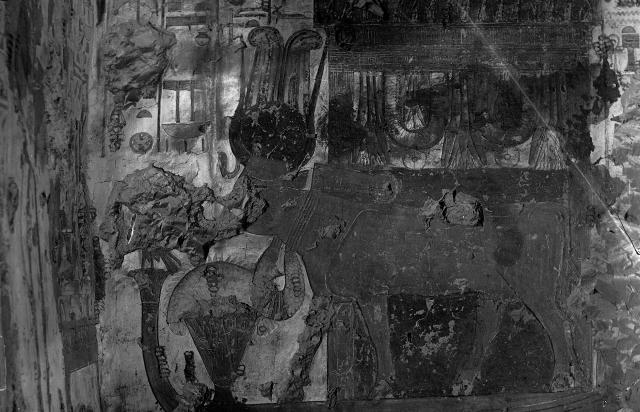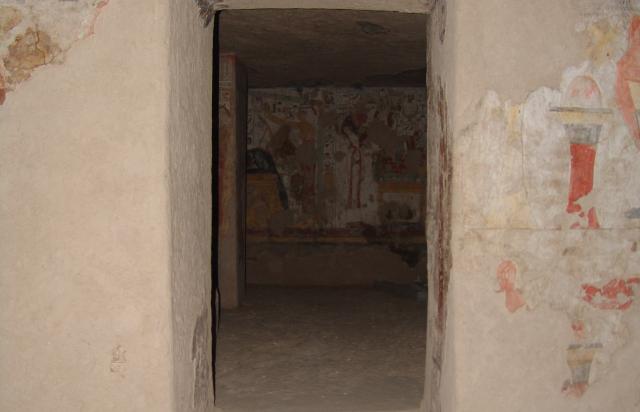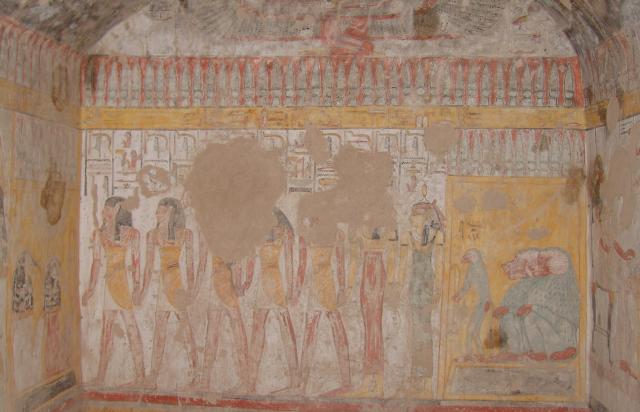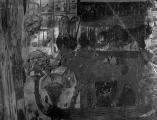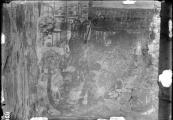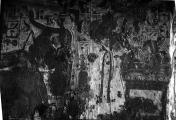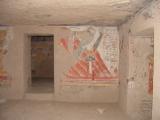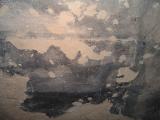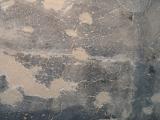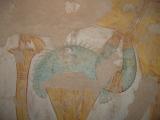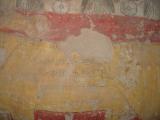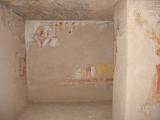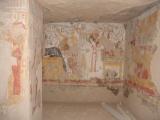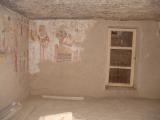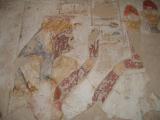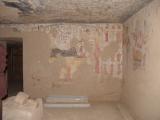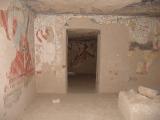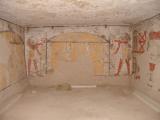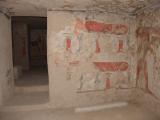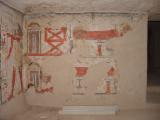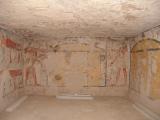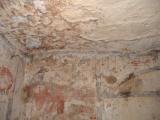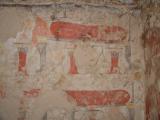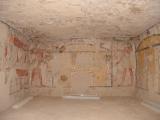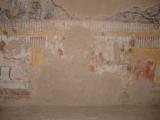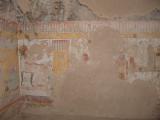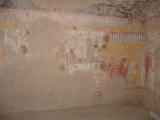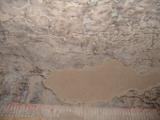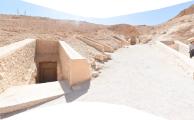QV 40
Anonymous Queen
Entryway A
See entire tombGate B
See entire tombThis gate provides access to the tomb and has been completely reconstructed in fired brick and cement.
Pillared chamber B
See entire tombThis pillared hall functions as the antechamber of the tomb and its floor is below that of the entry gate. It originally contained two constructed pillars, of which the westernmost pillar has collapsed and been partly reconstructed.
The decoration in this chamber consists of painted raised relief and, although damaged, is in surprisingly good condition, with the colors bright and vibrant. The iconography centers on the Queen offering to various deities in exchange for protection and being welcomed into the Netherworld.
Porter and Moss designation:
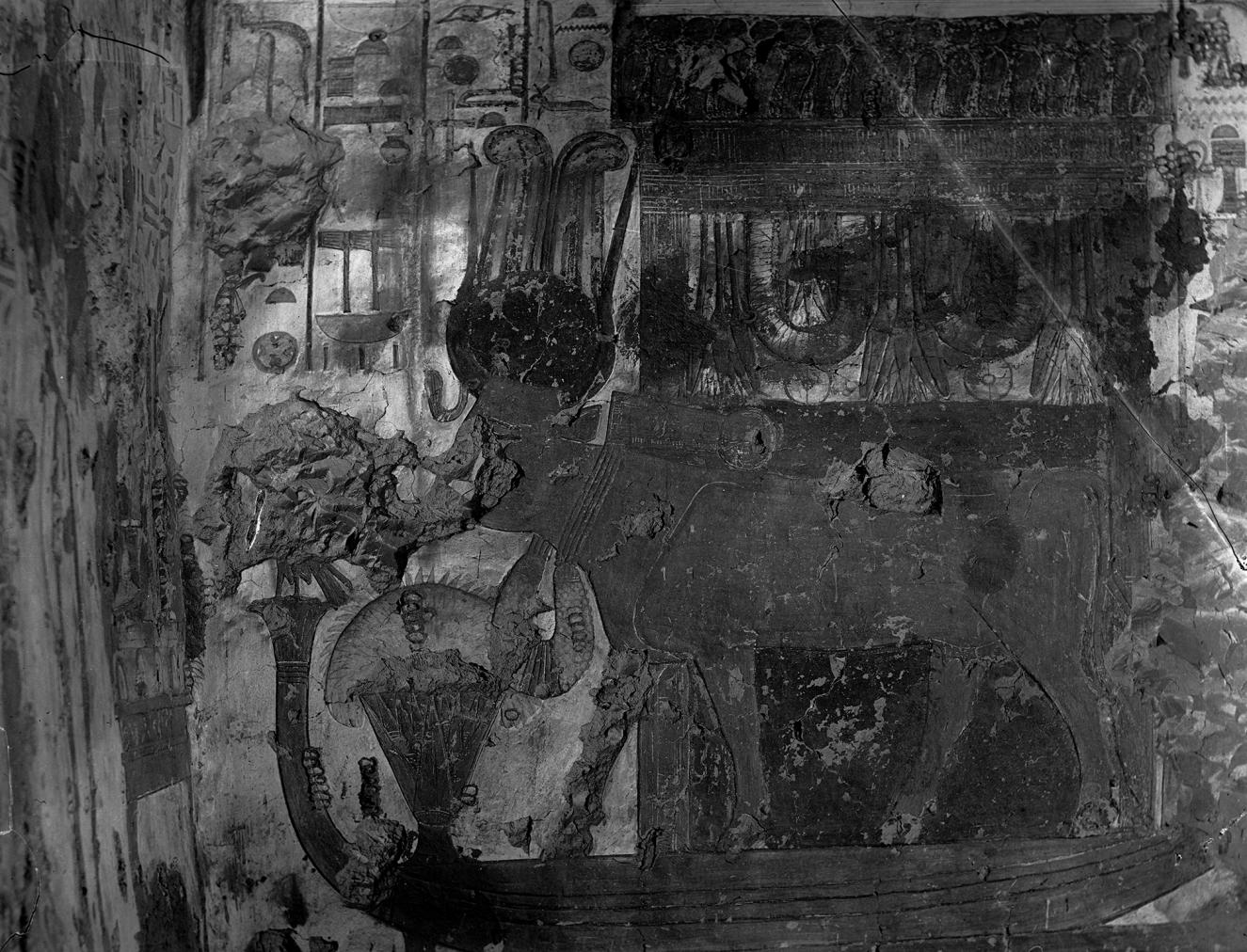
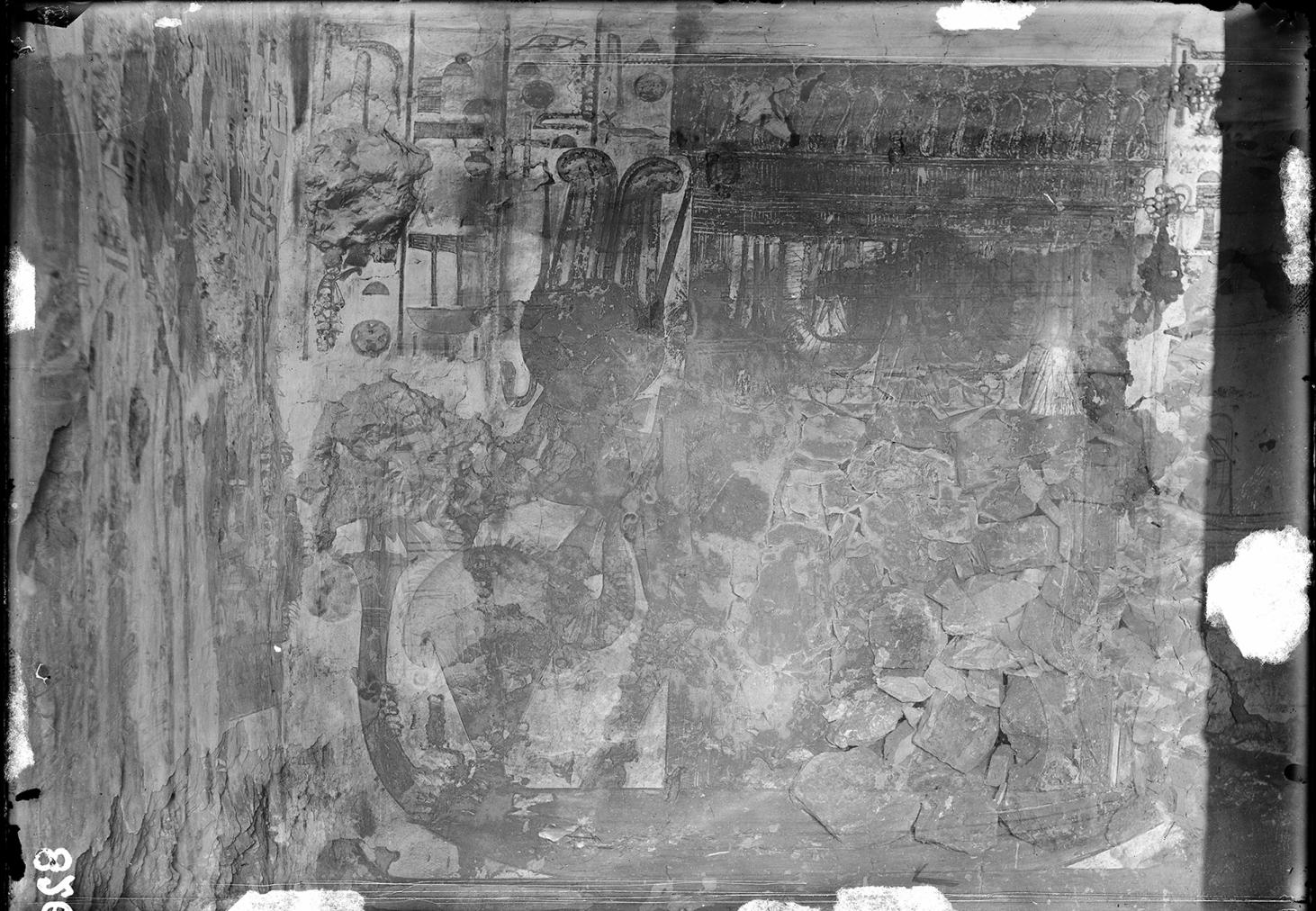
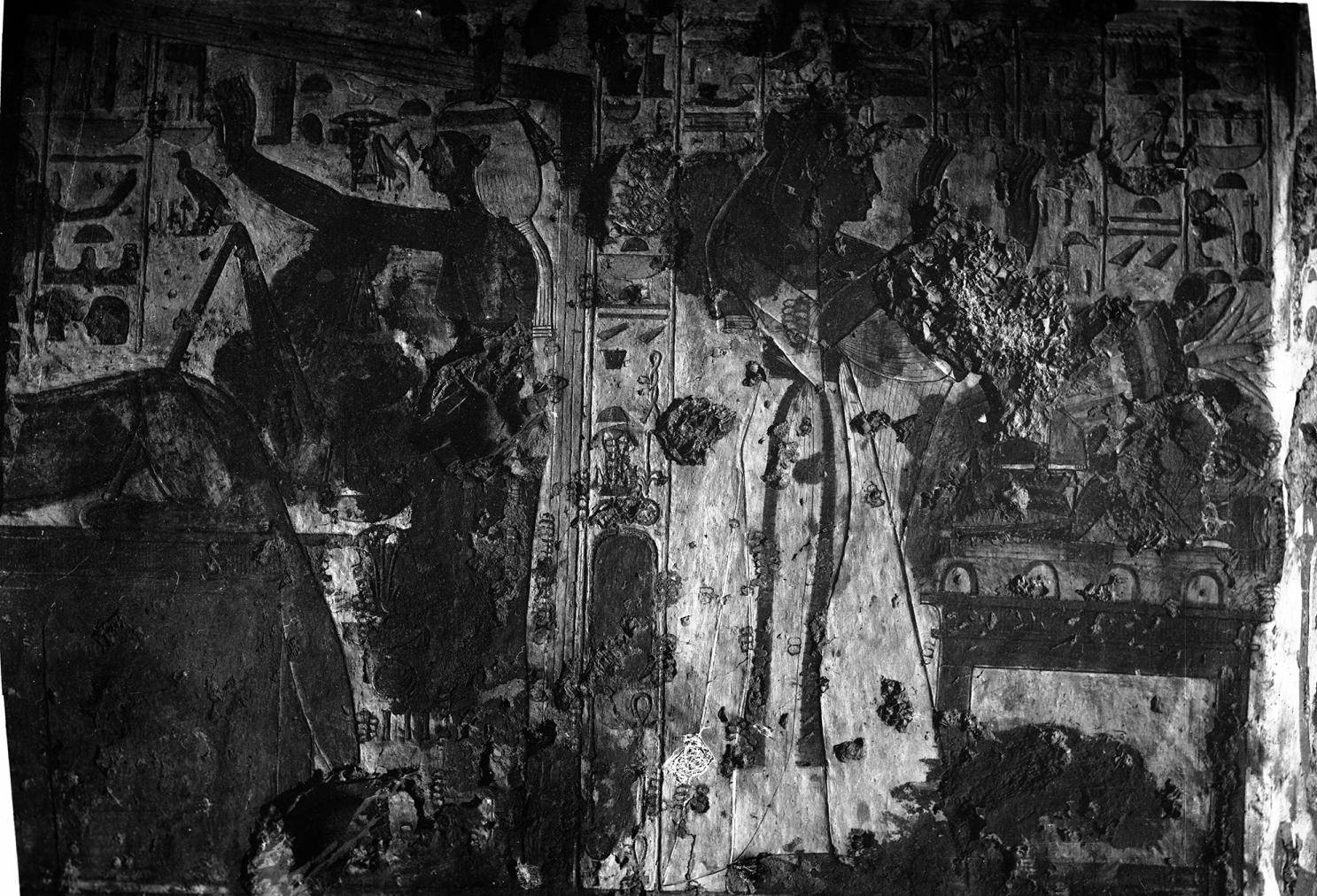
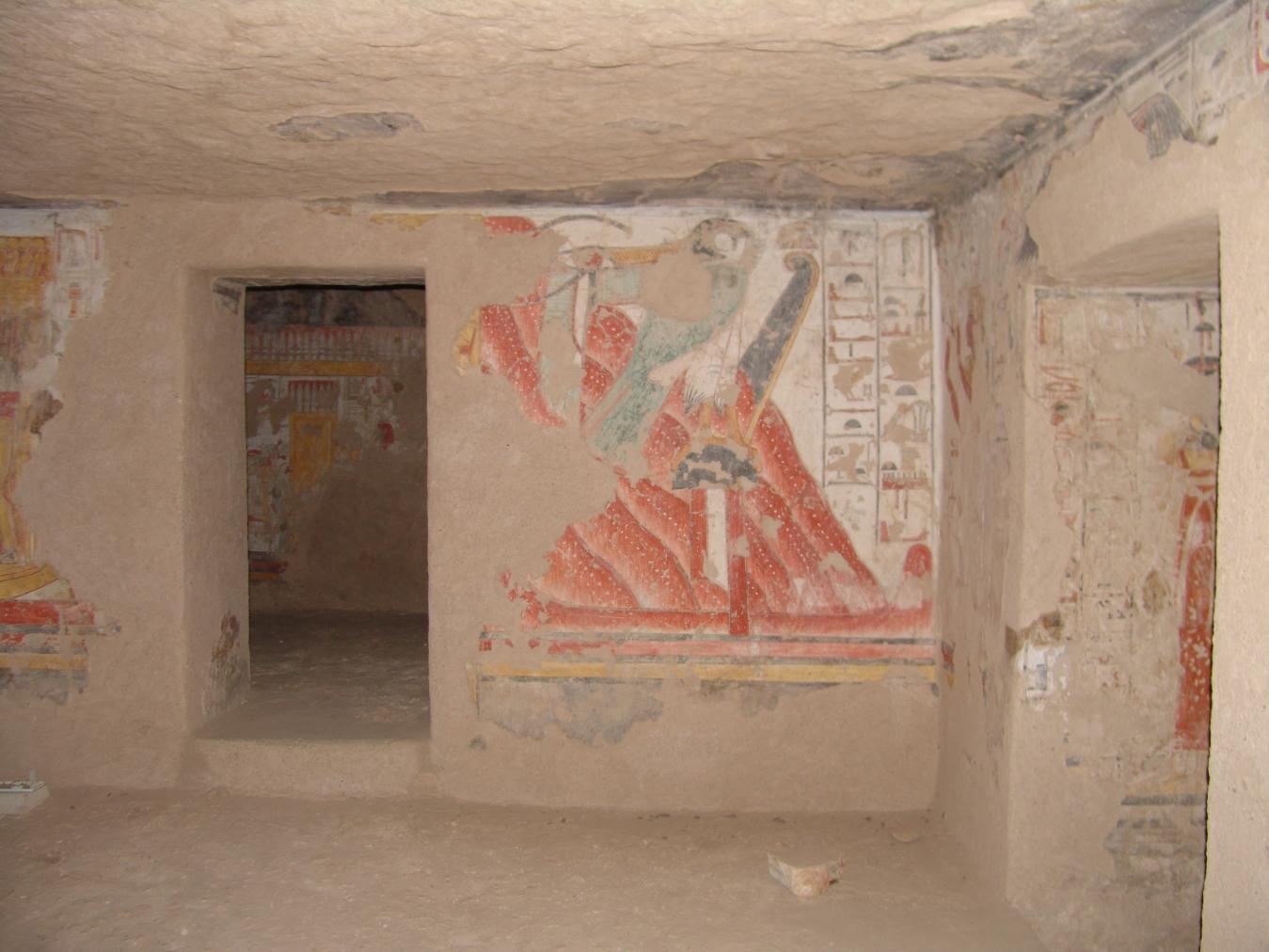
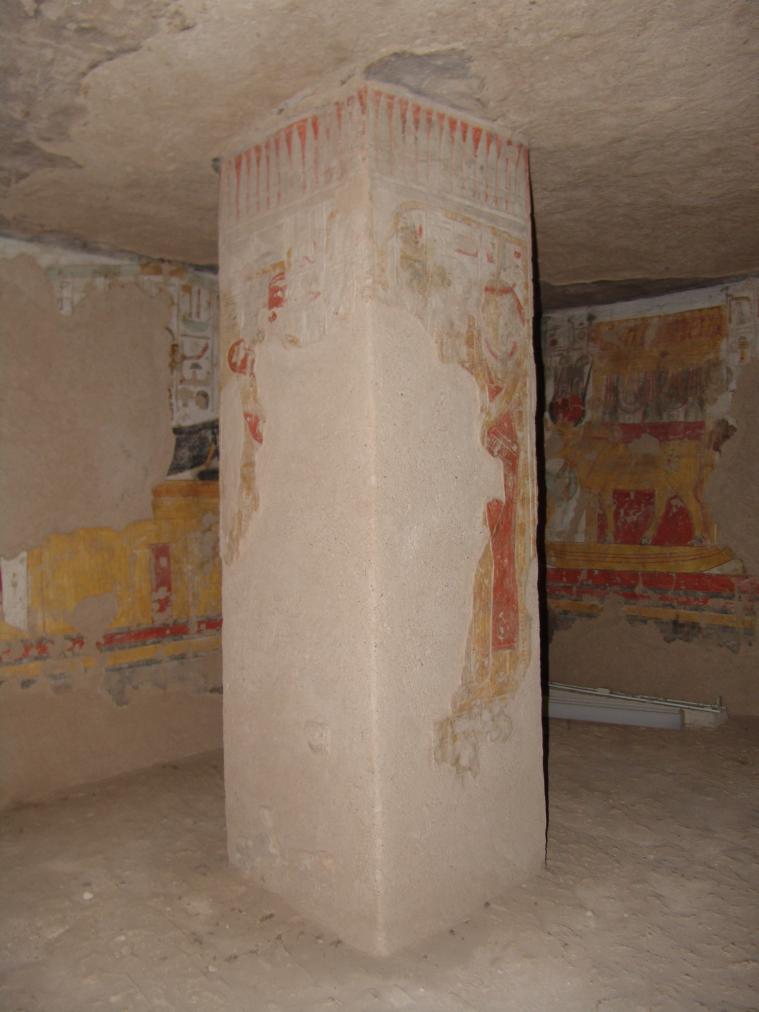
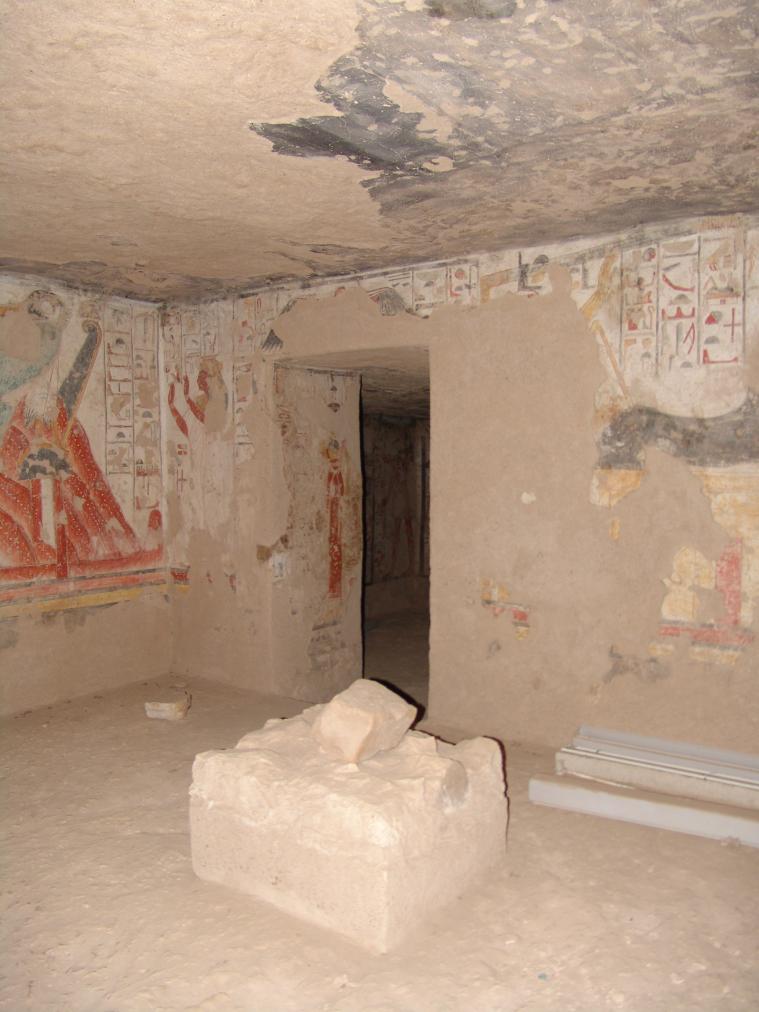
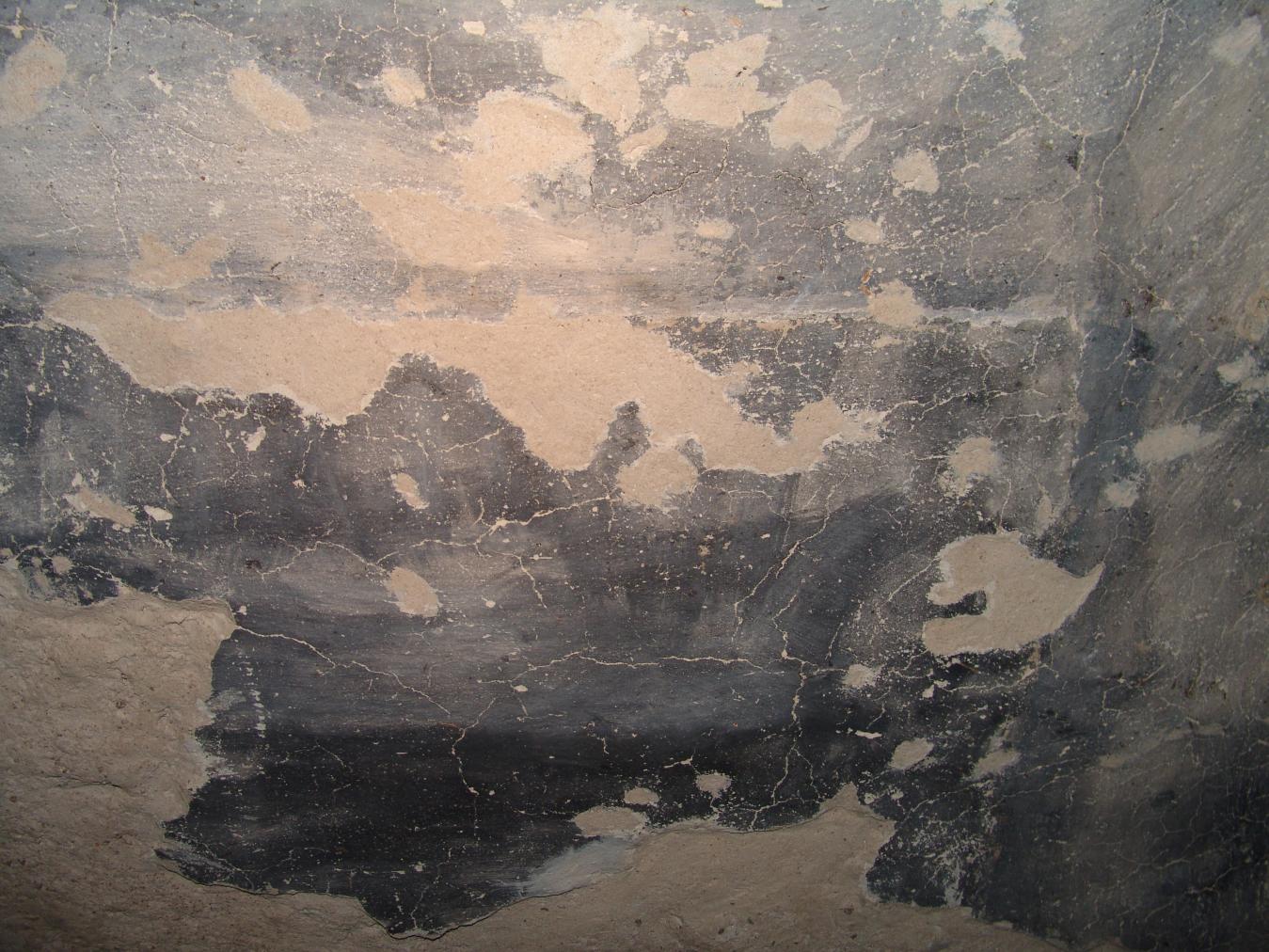
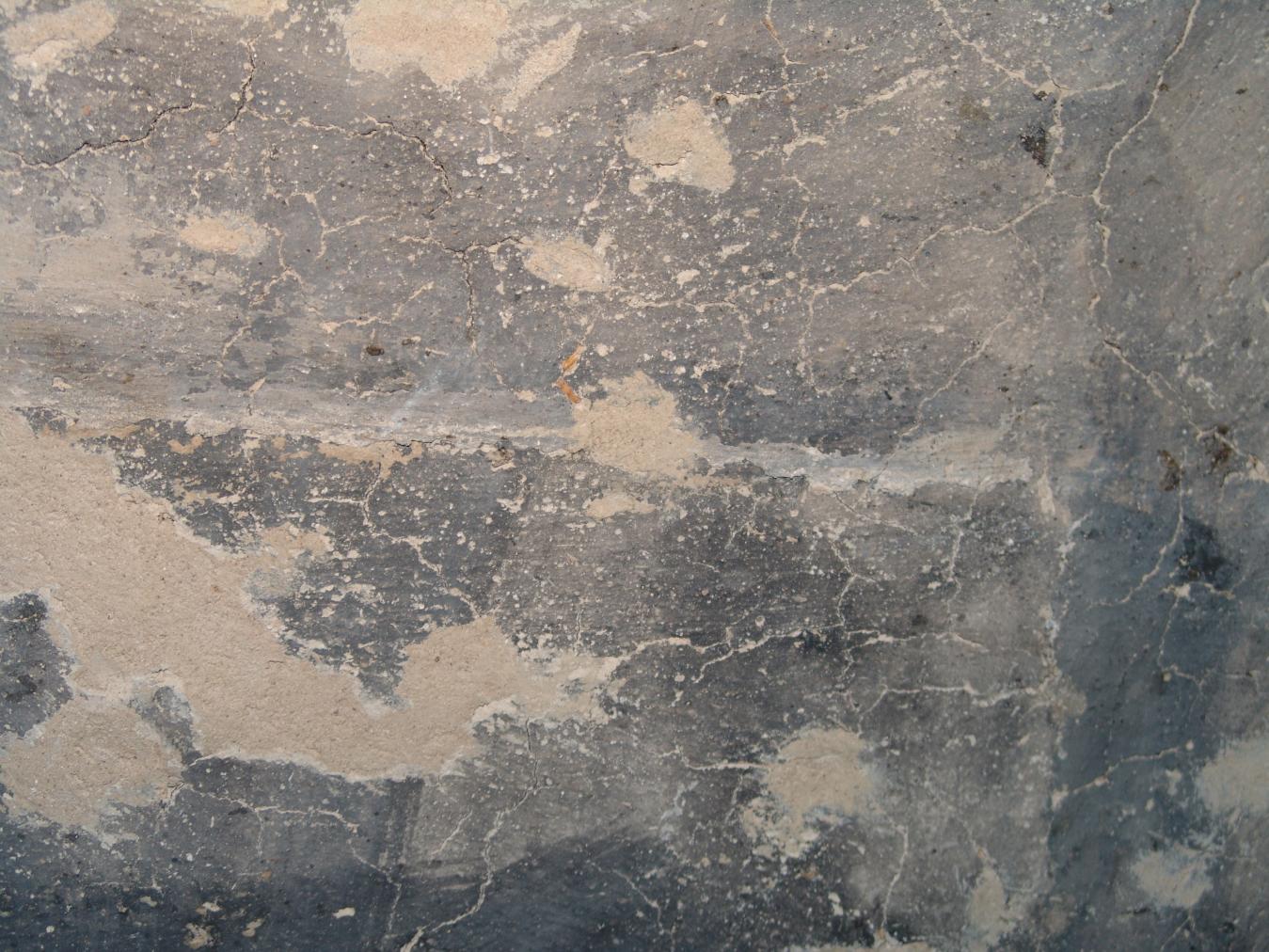
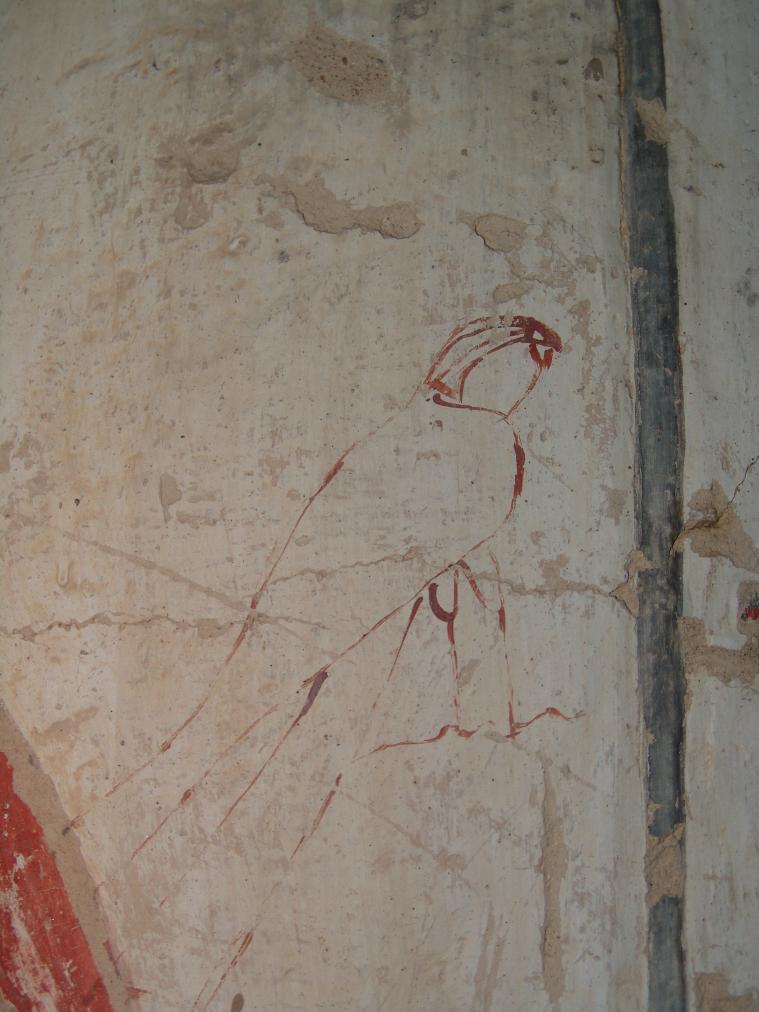
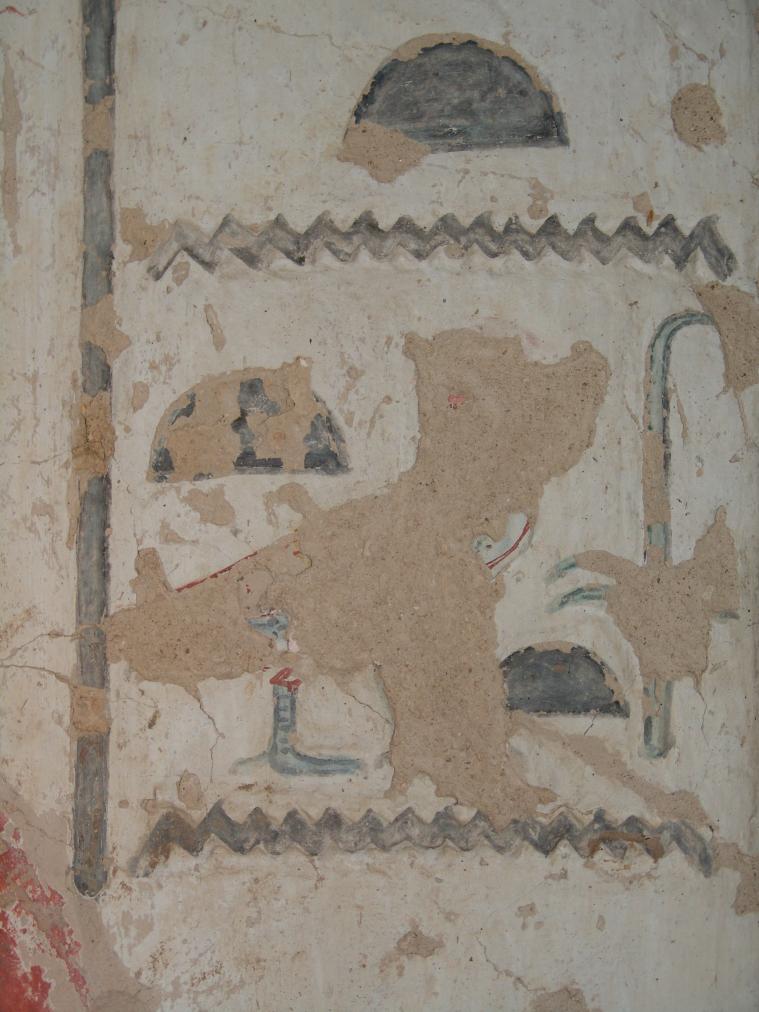
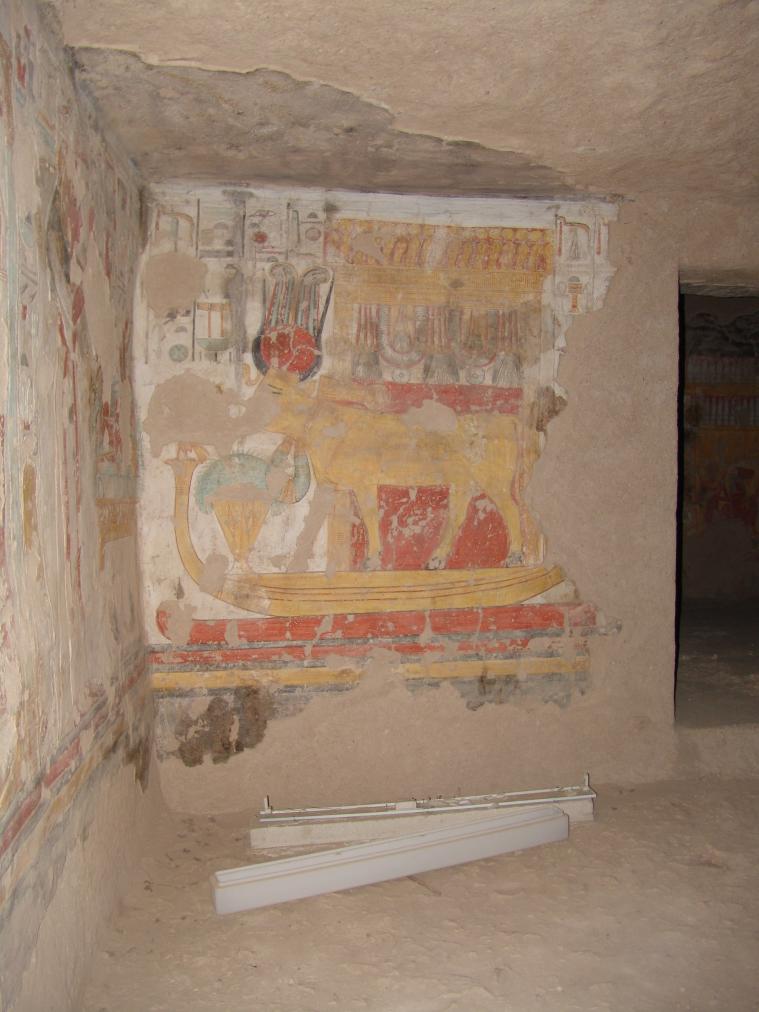
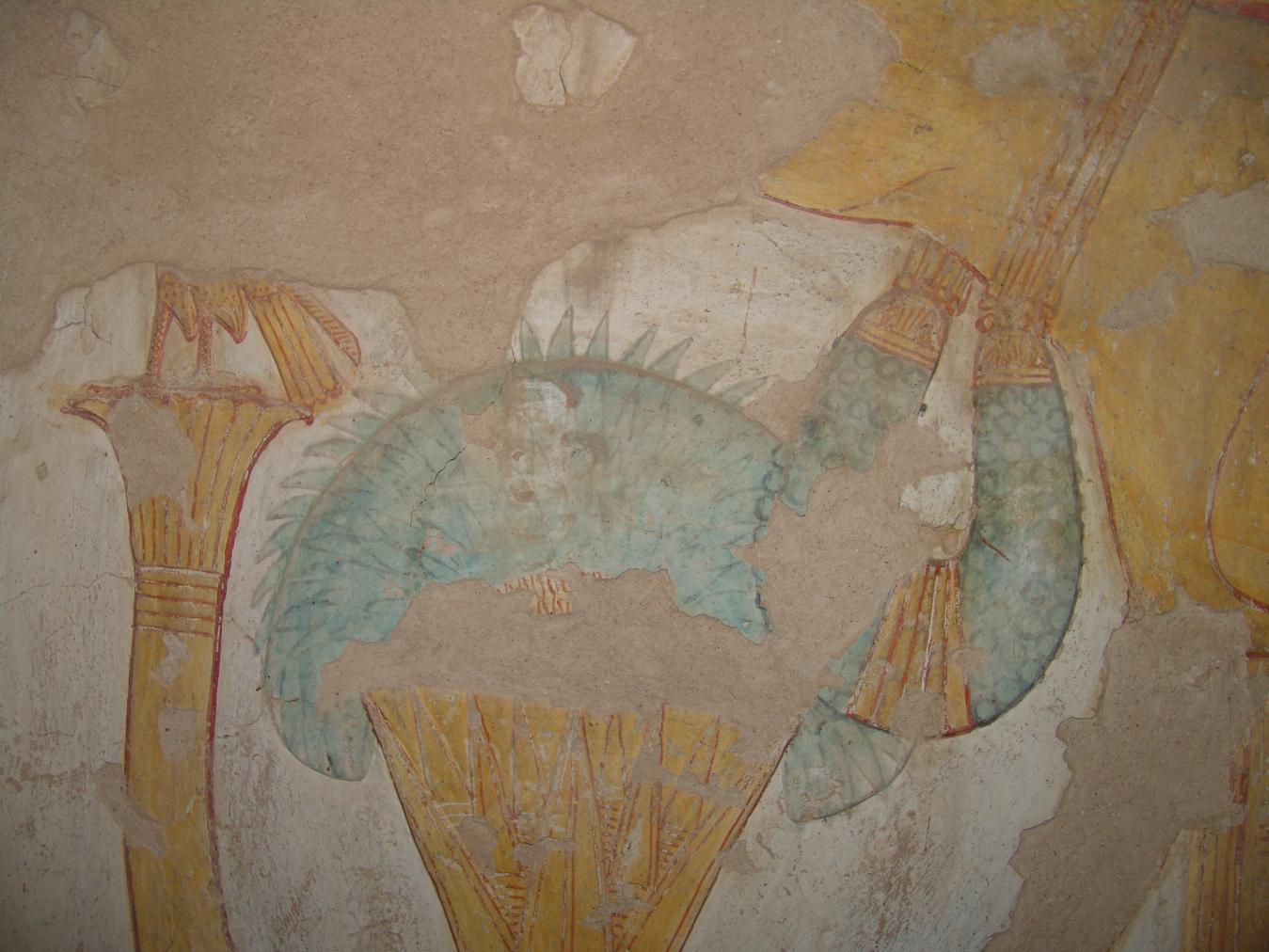
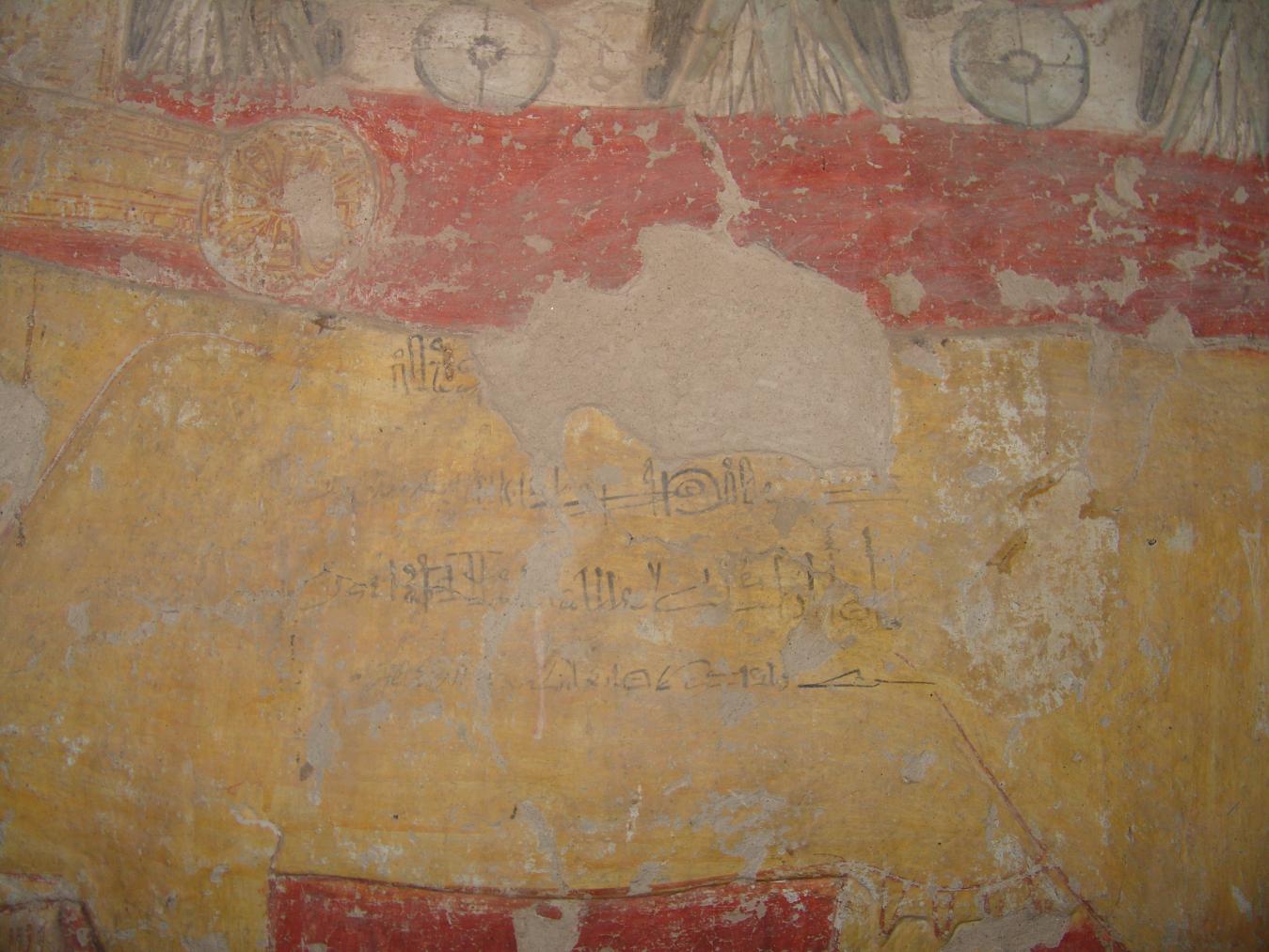
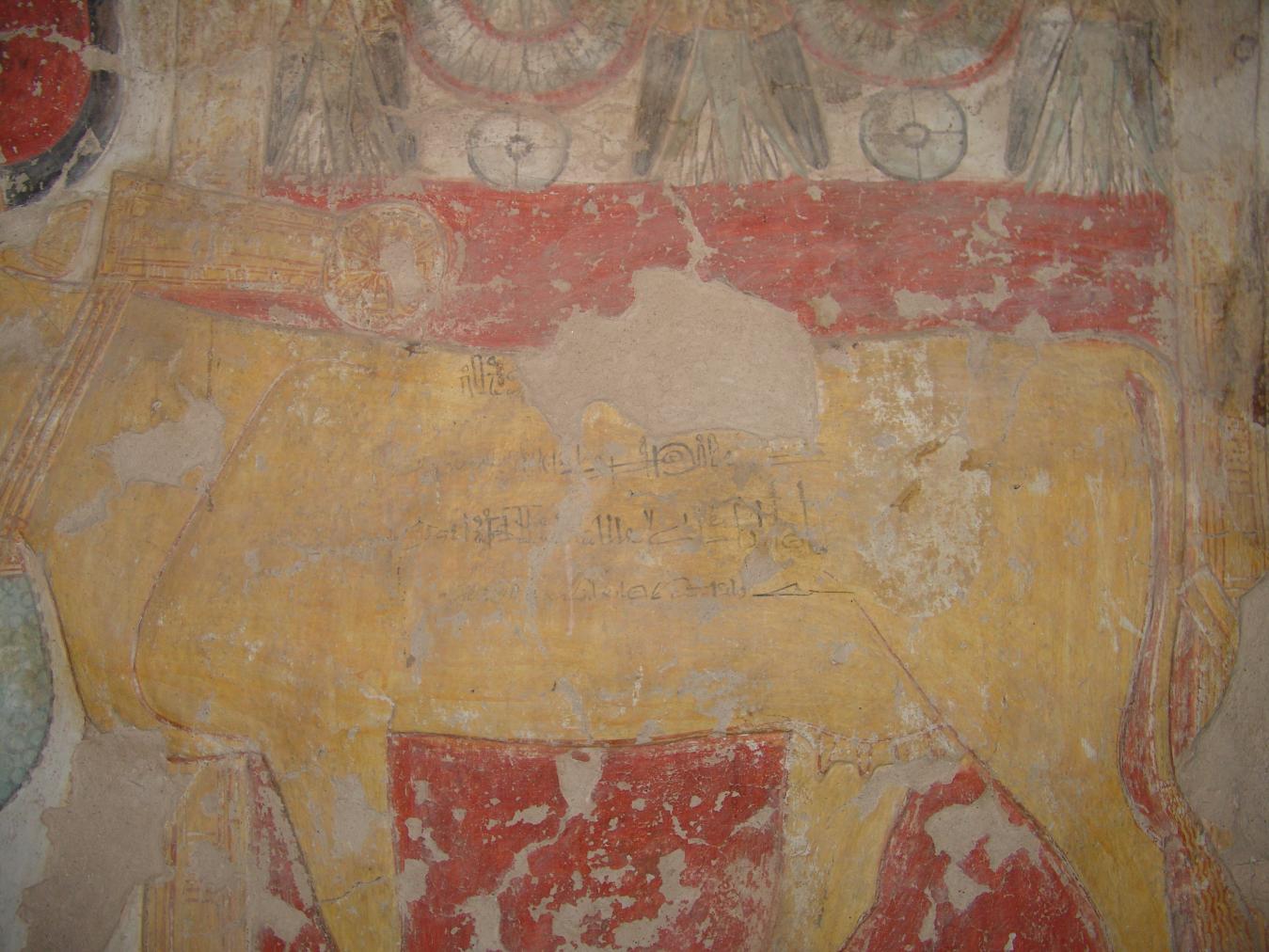
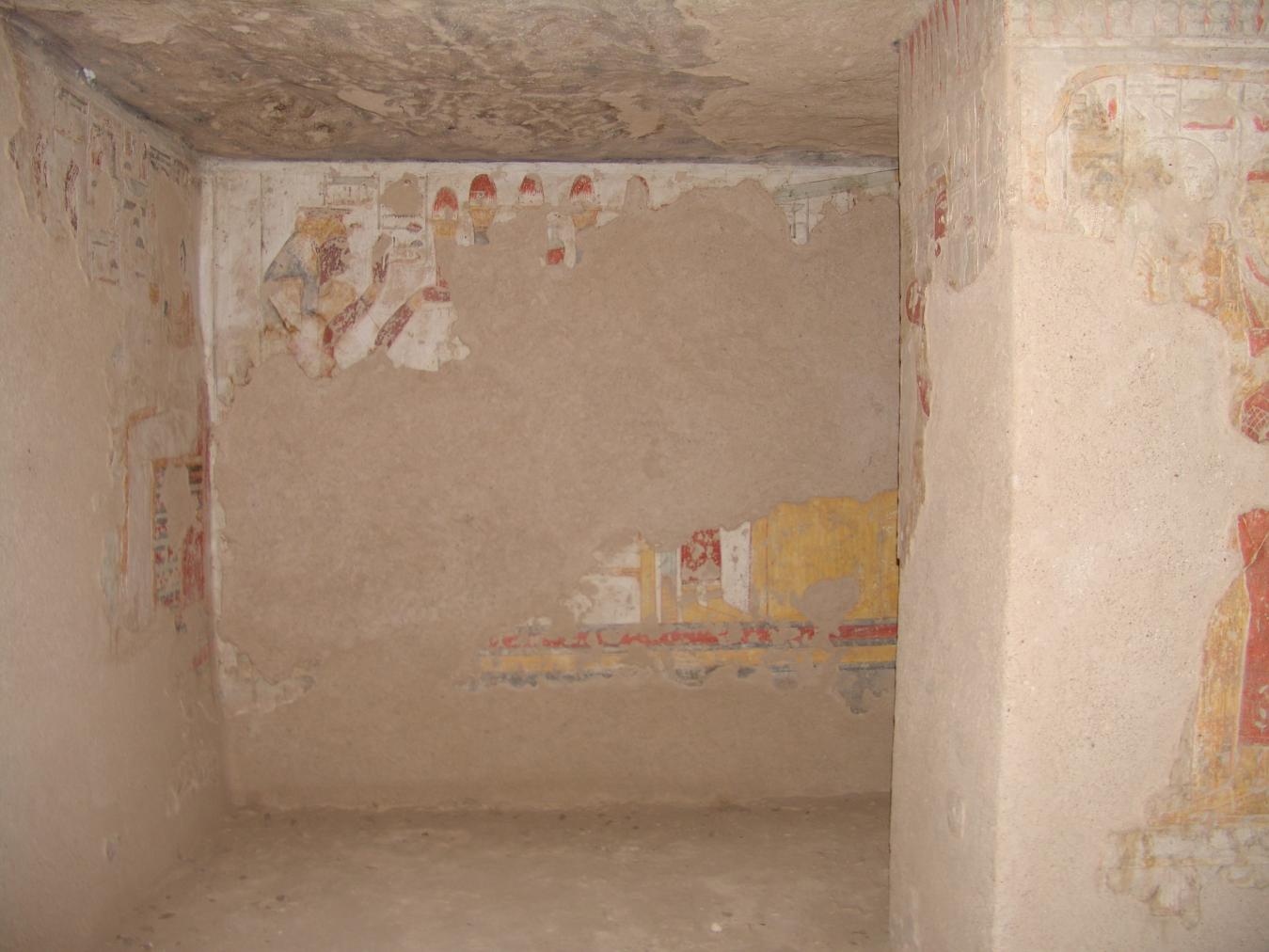
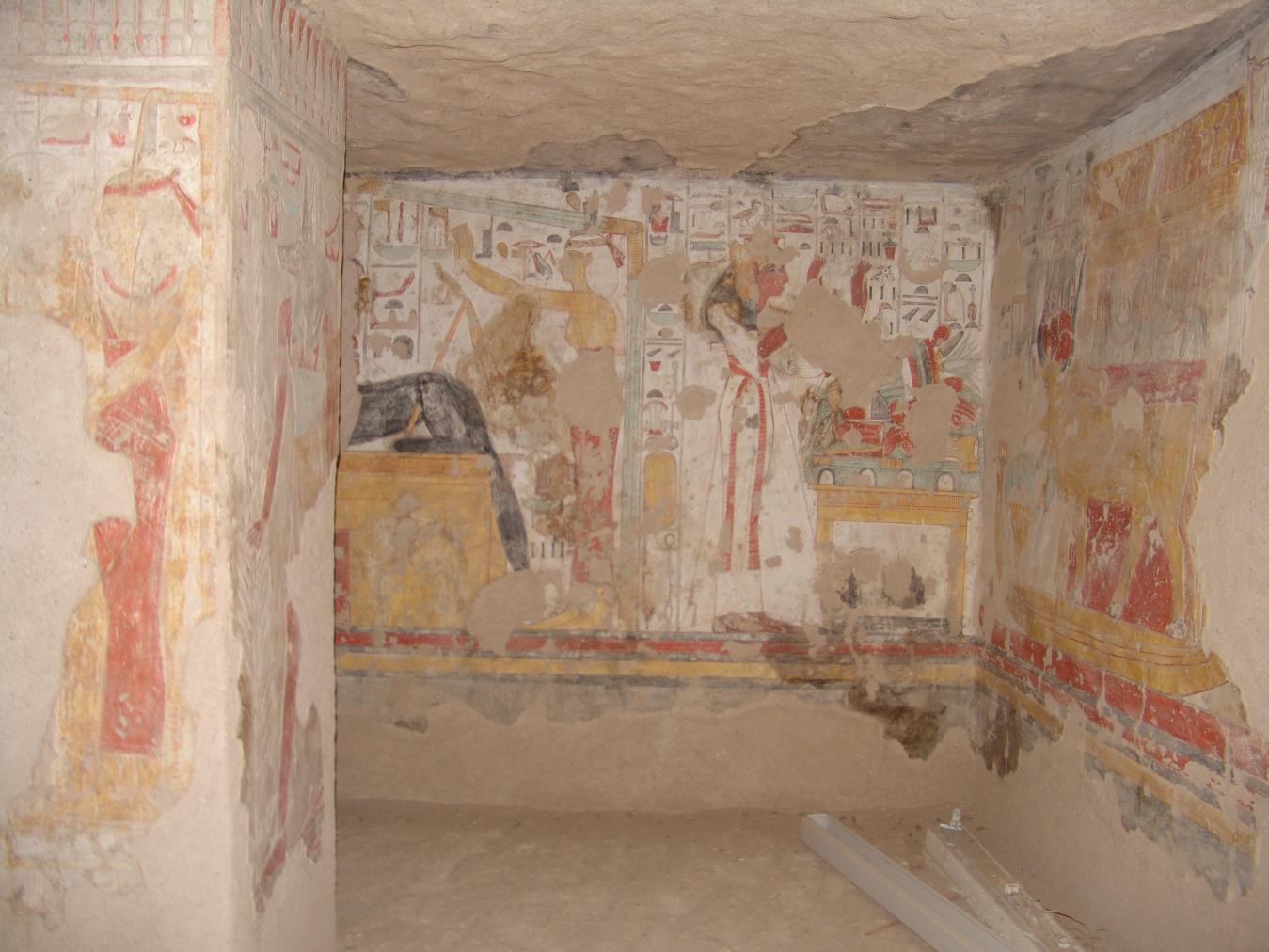
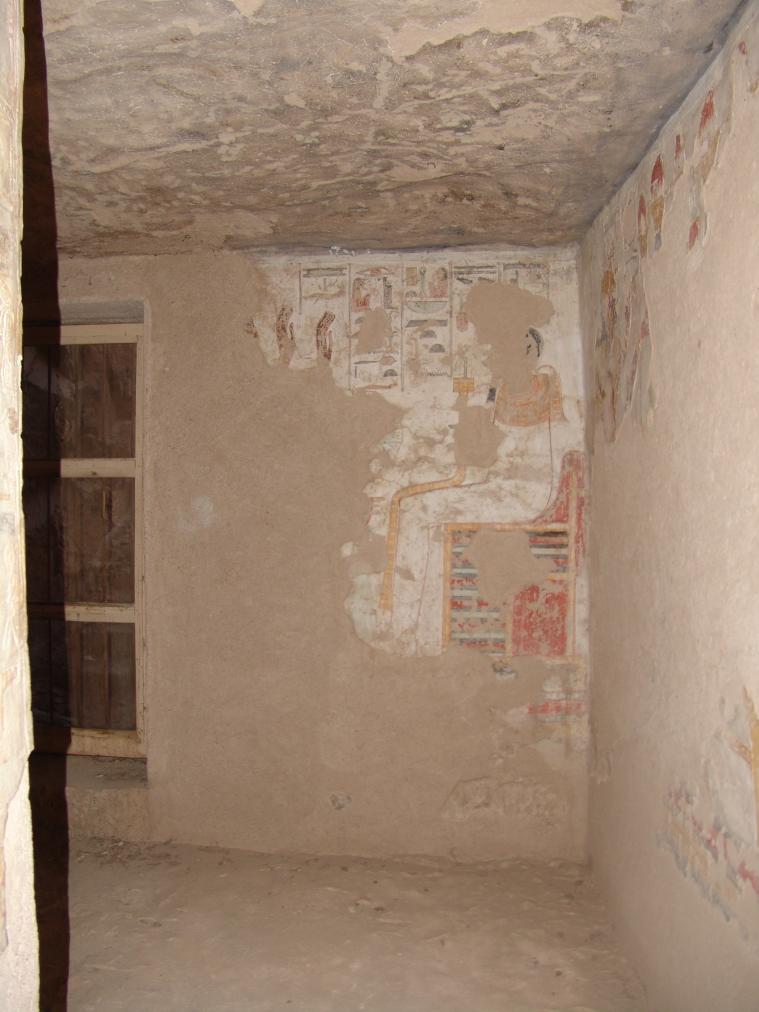
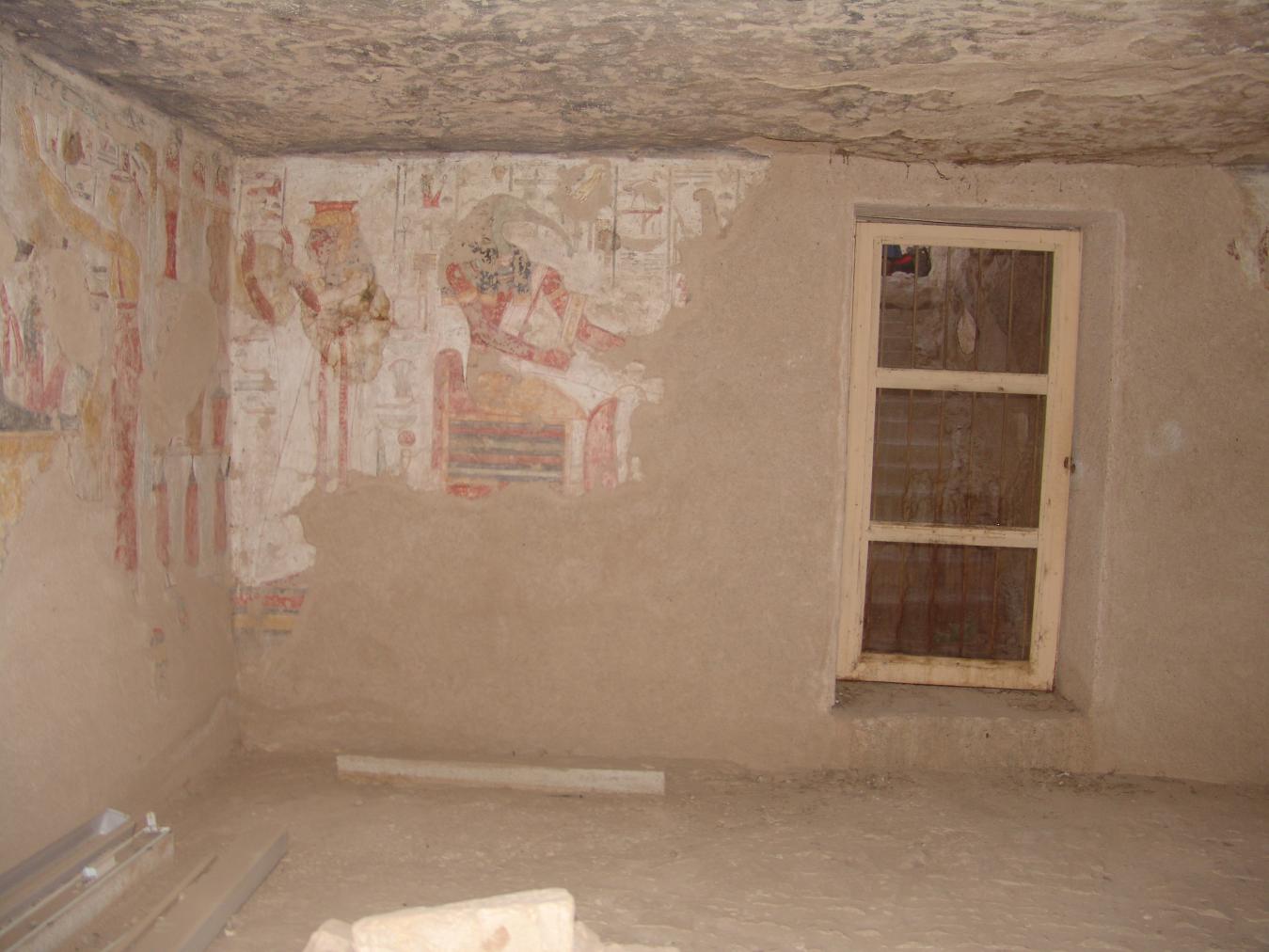
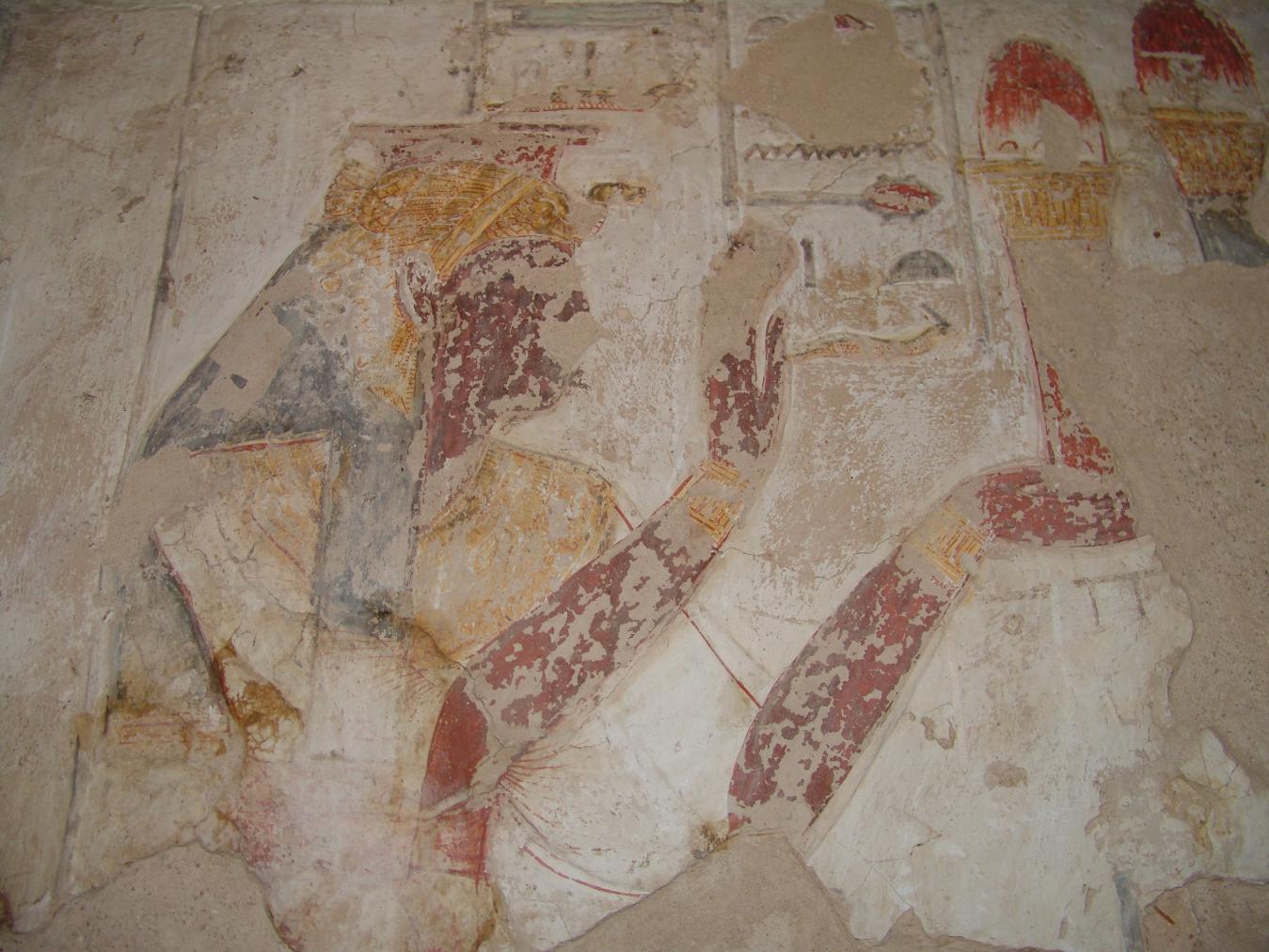
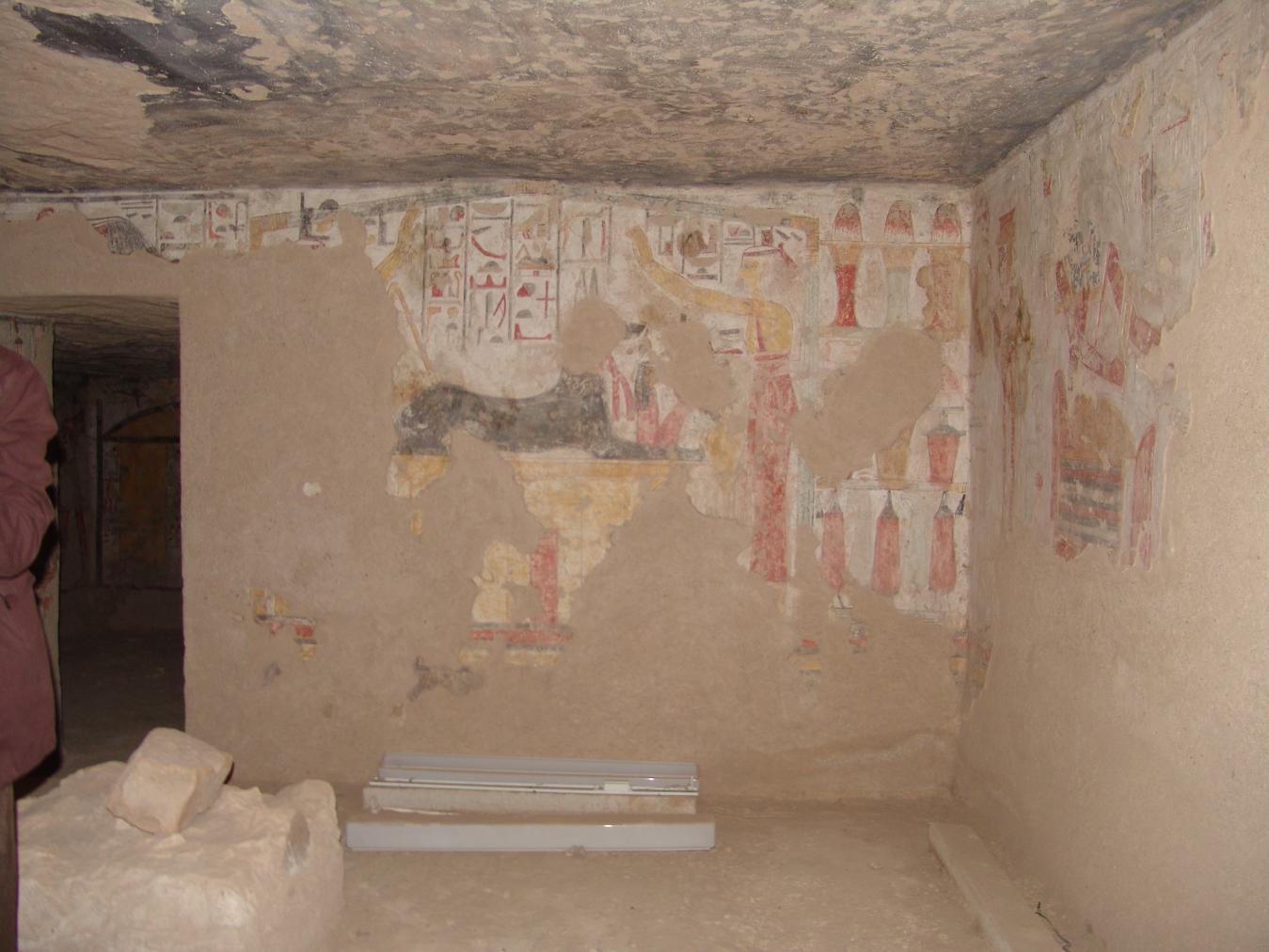
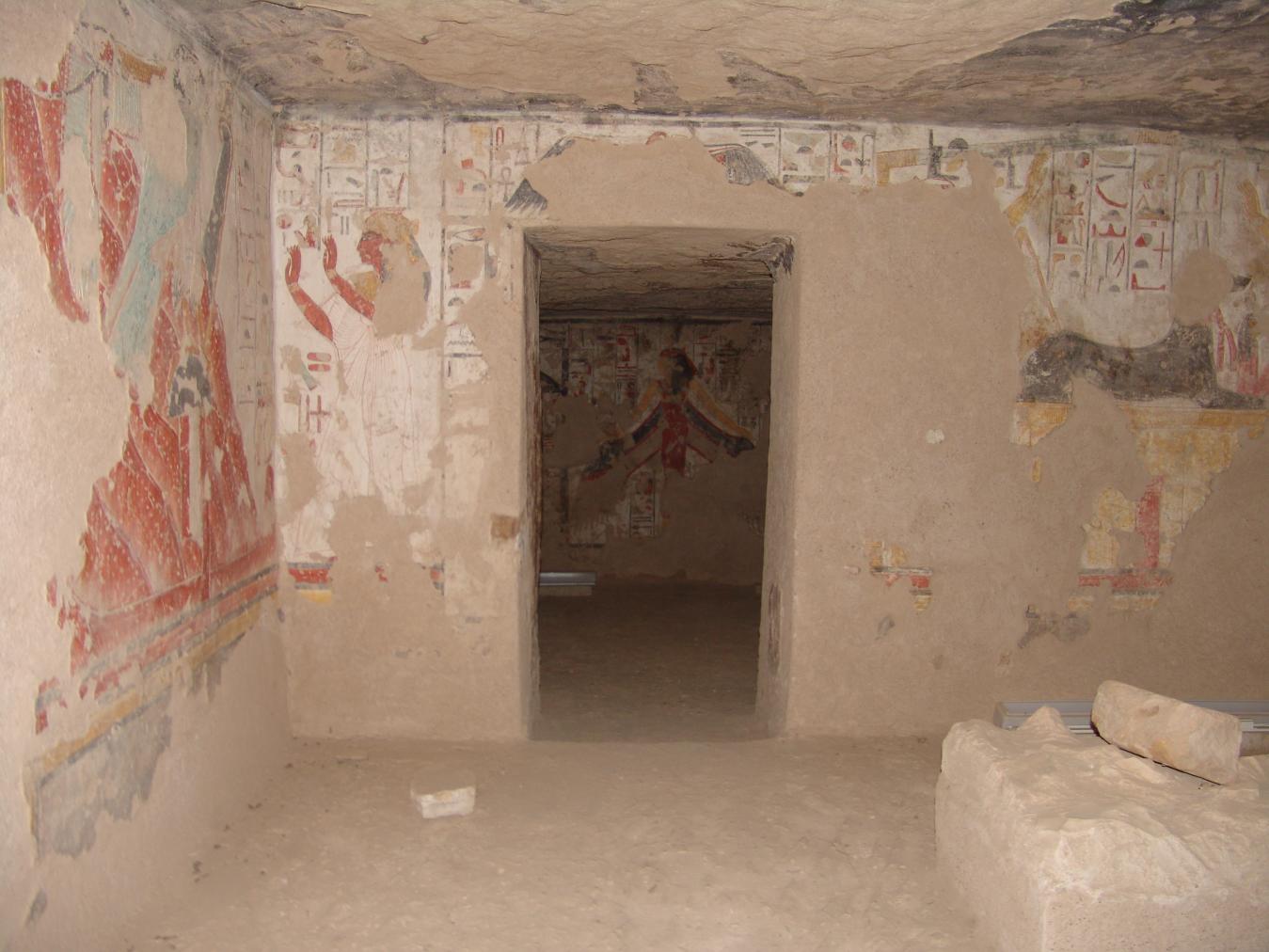
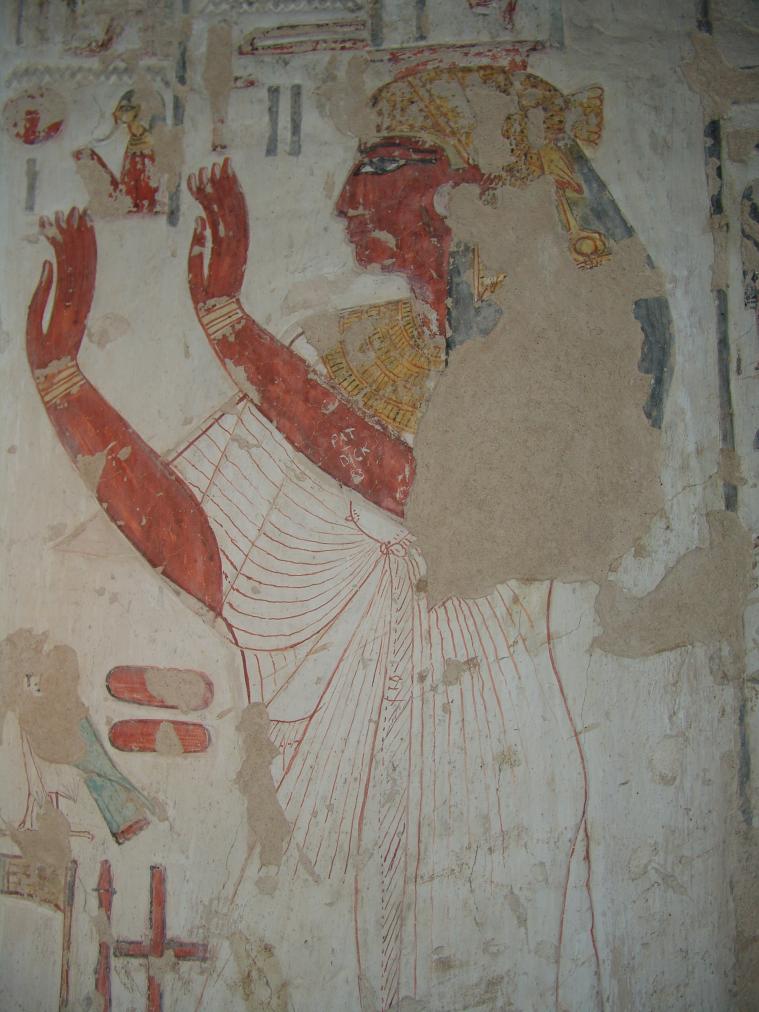
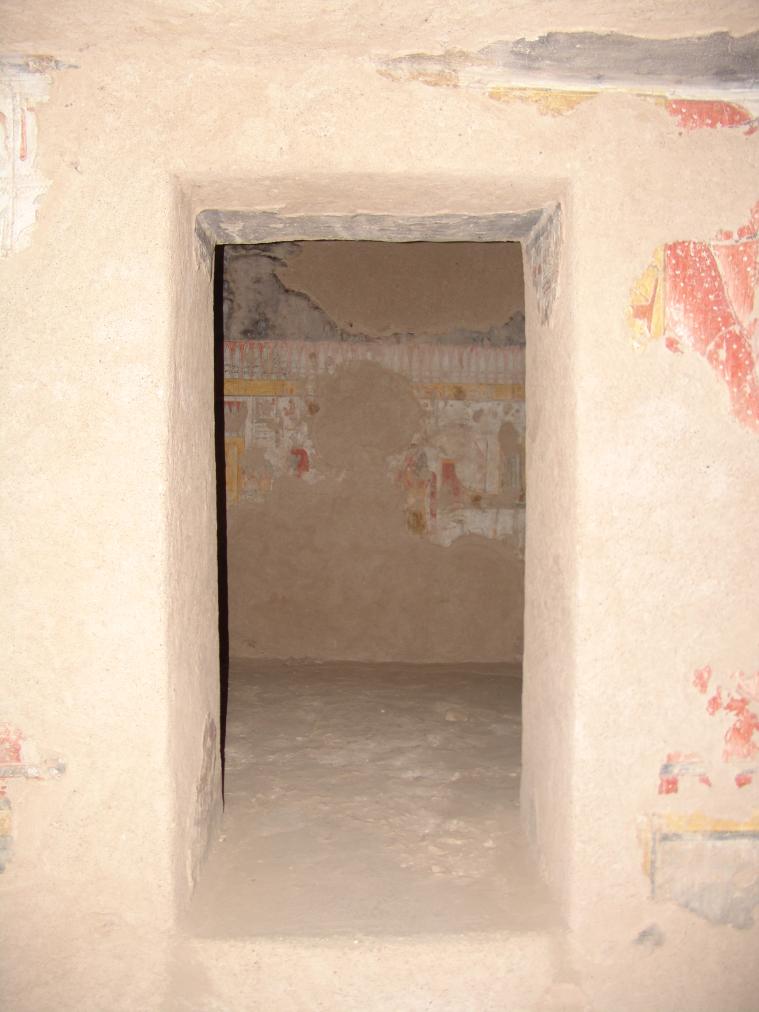
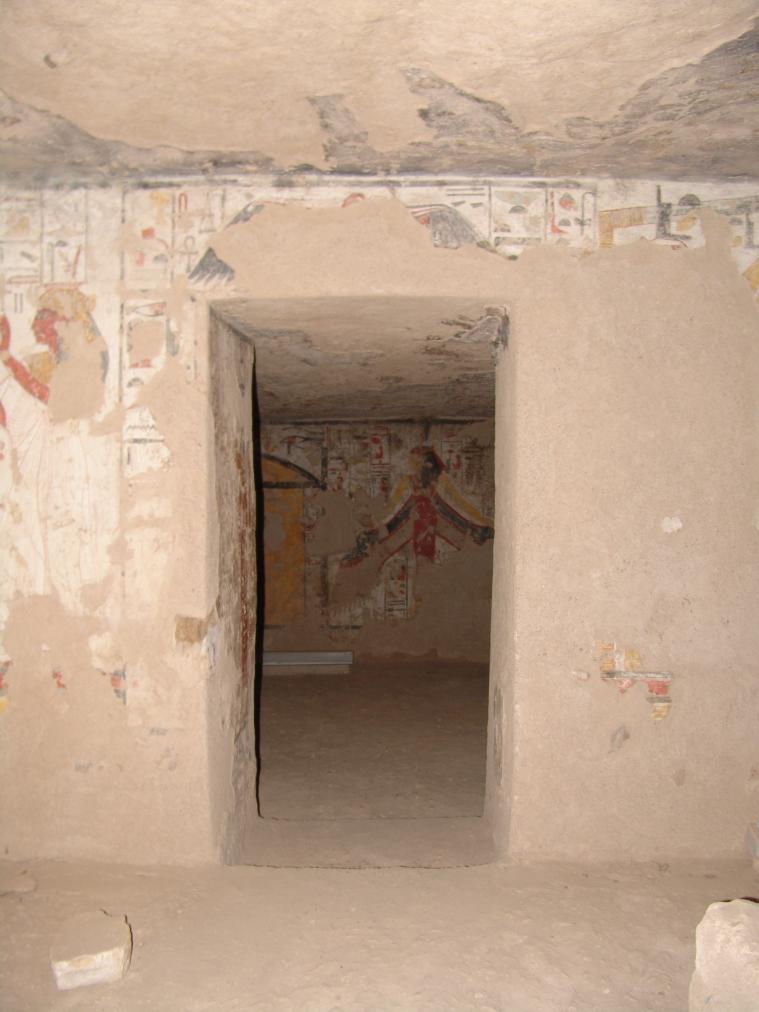
Gate Ba
See entire tombThis gate is cut into the western wall of the pillared chamber and provides access to a side room. It has been largely reconstructed in fired brick and cement, although fragments of decoration are still in place. This consists of Meretseger as western goddess on the left thickness and texts on the left reveal.
Porter and Moss designation:
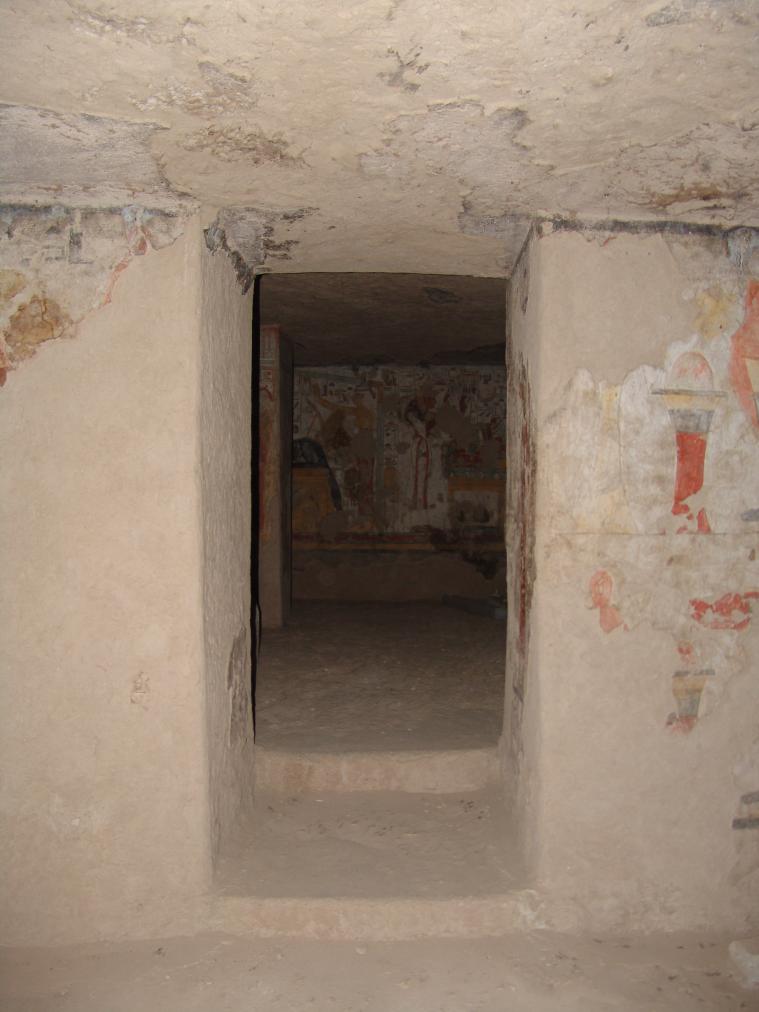

Side chamber Ba
See entire tombThis side chamber is located on the western side of the pillared chamber. The decoration of the walls was painted on to the plaster and no evidence of relief carving is visible.
The iconography indicates that this chamber was used for the storage of the queen's burial equipment, particularly the canopic chests. Images of these chests are painted on to the north, south, and west walls and Book of the Dead Spell 161 accompanies the north and south depictions.
Porter and Moss designation:

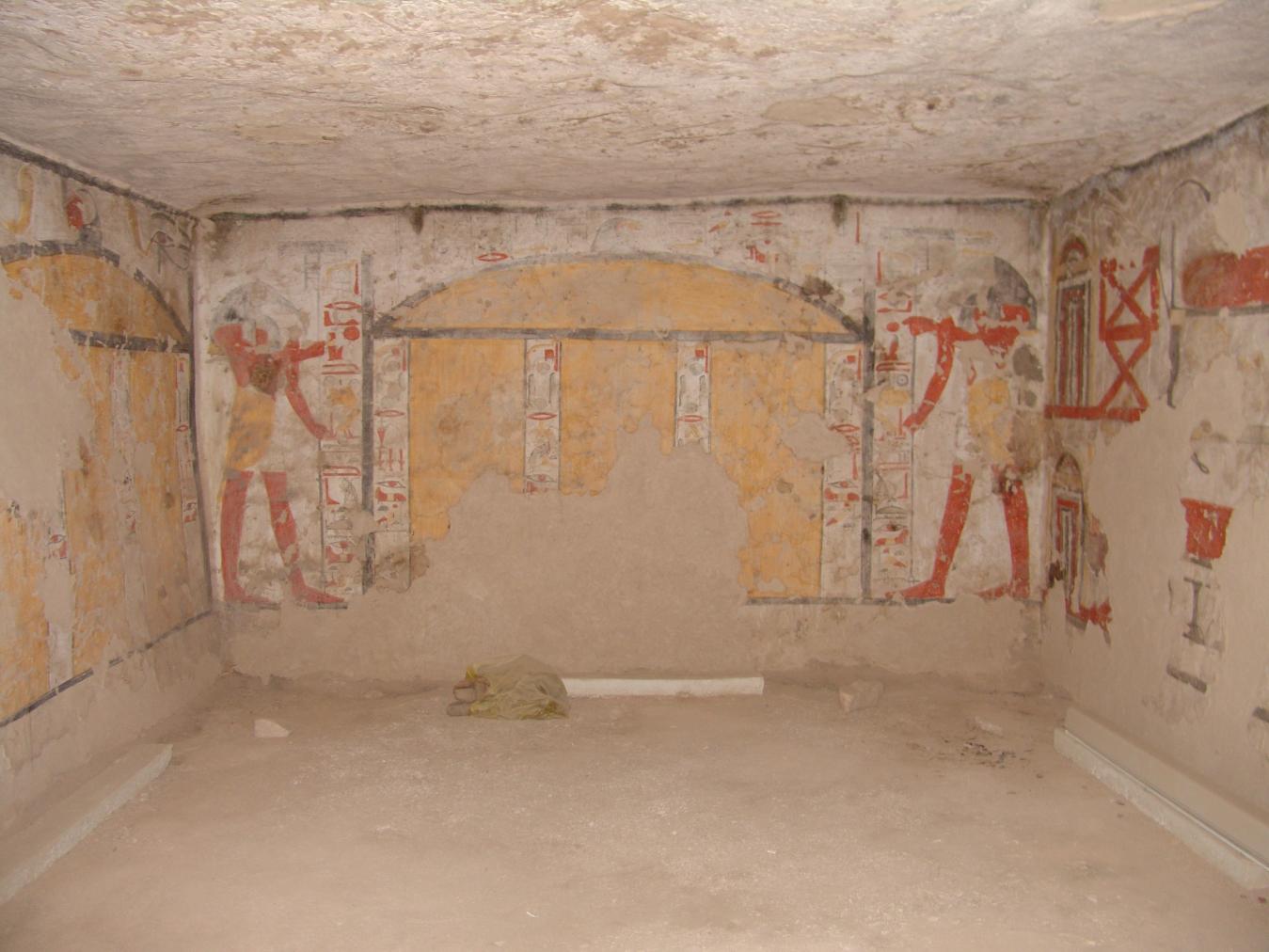
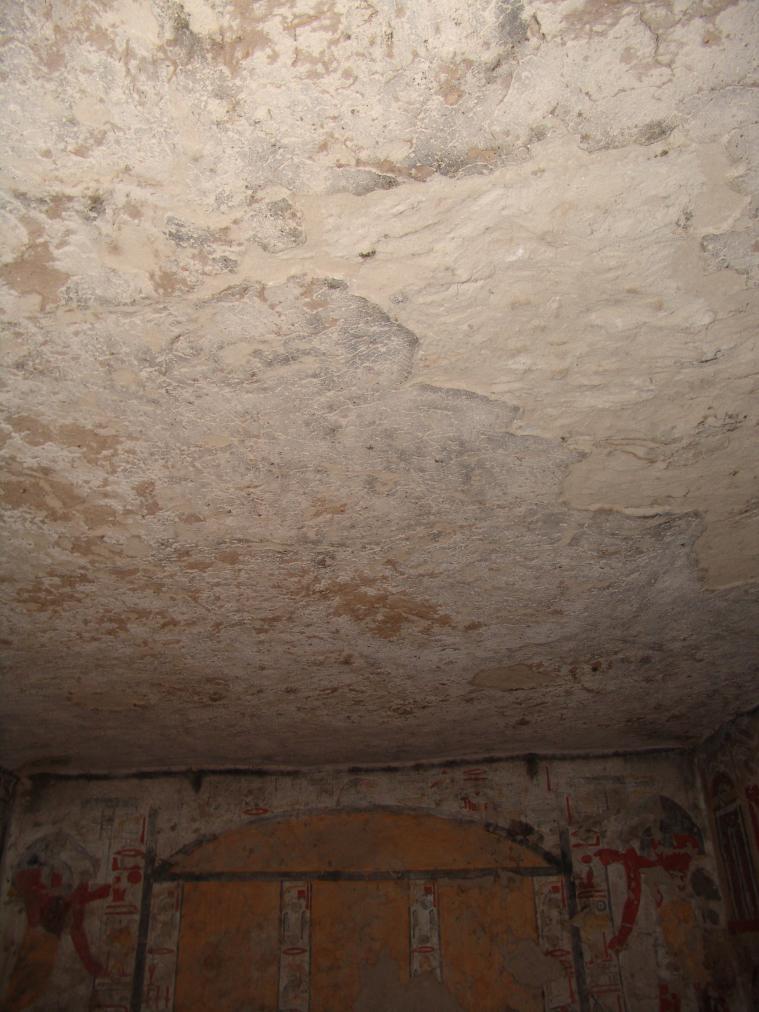
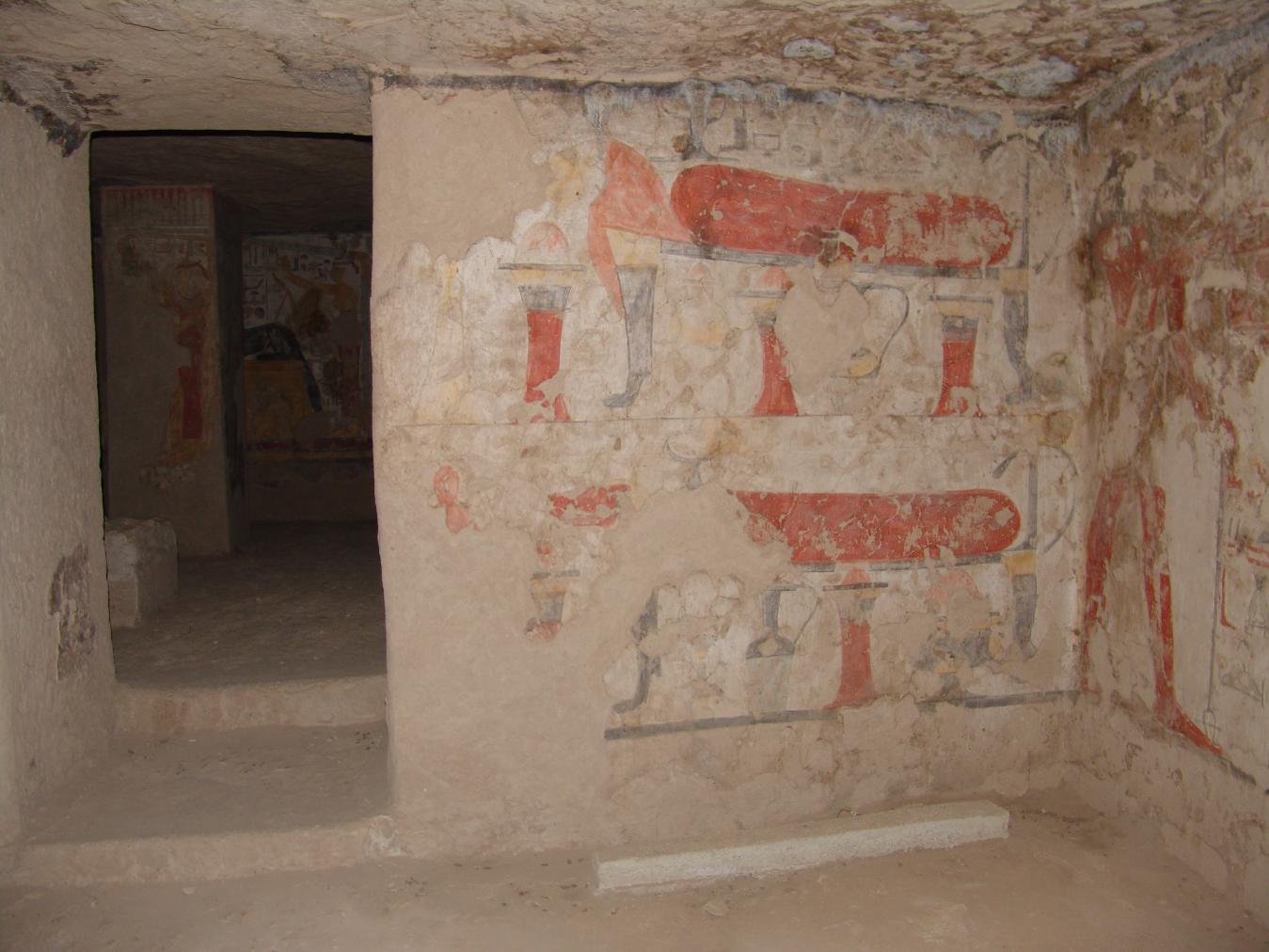
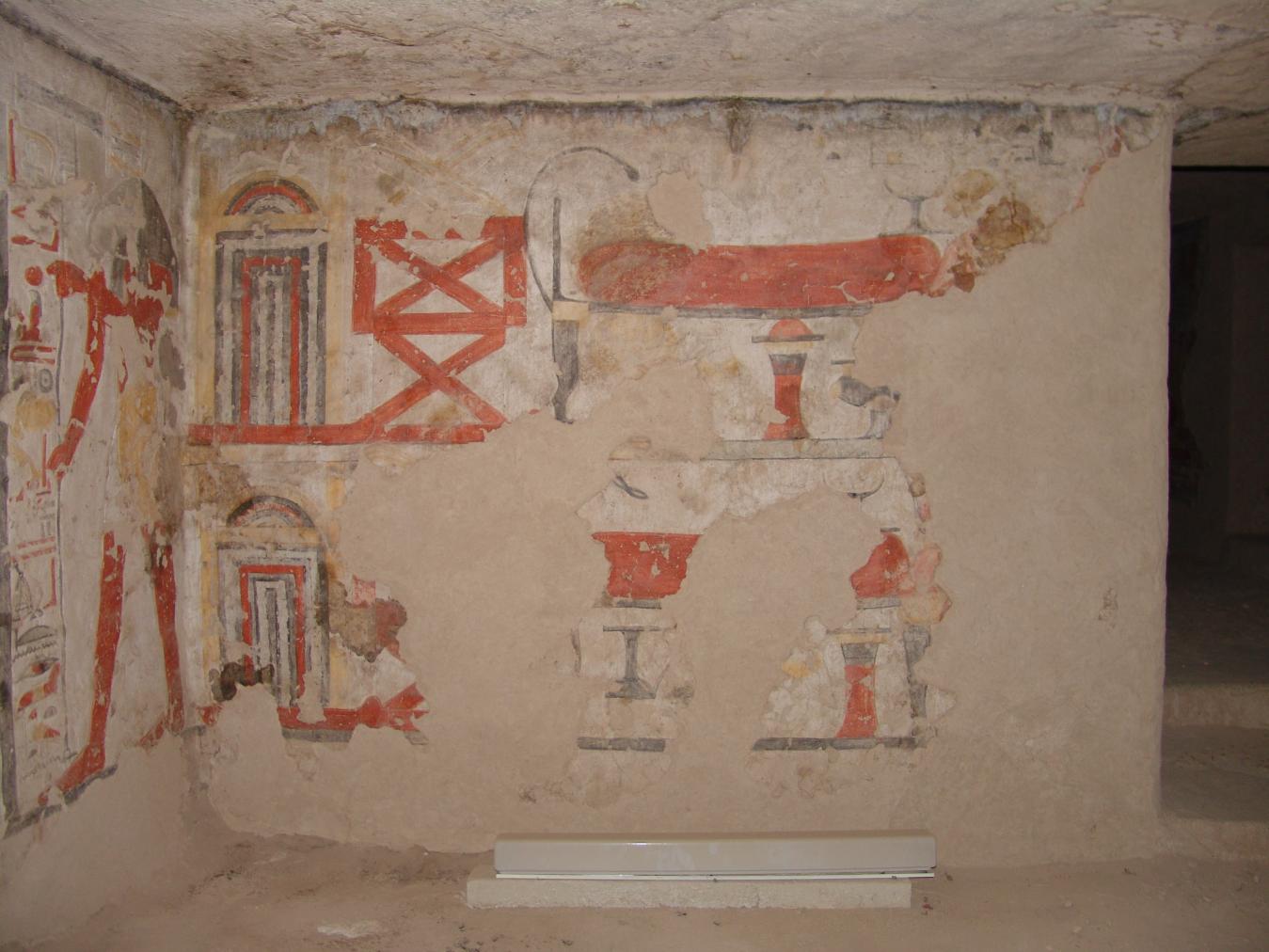
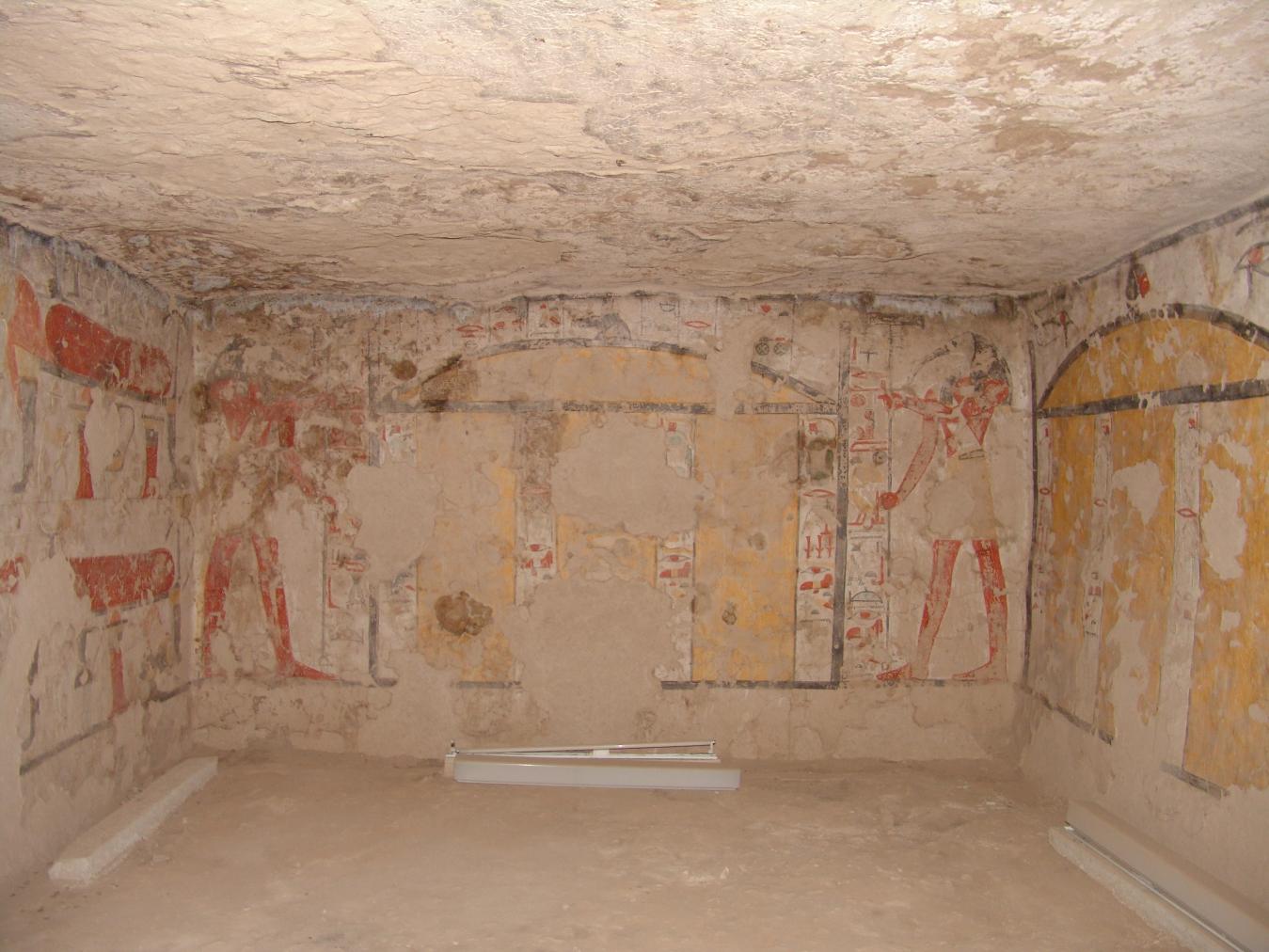
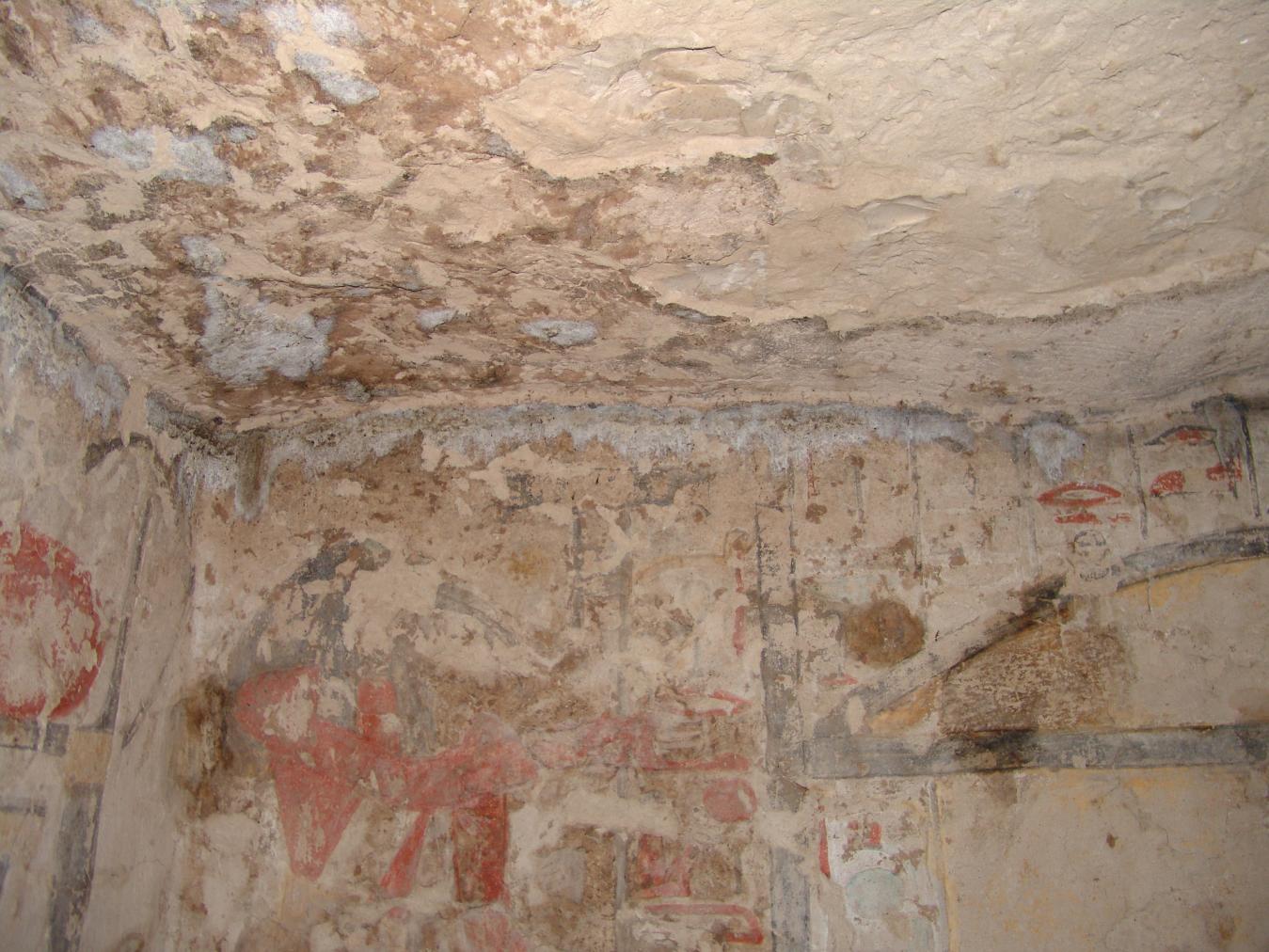
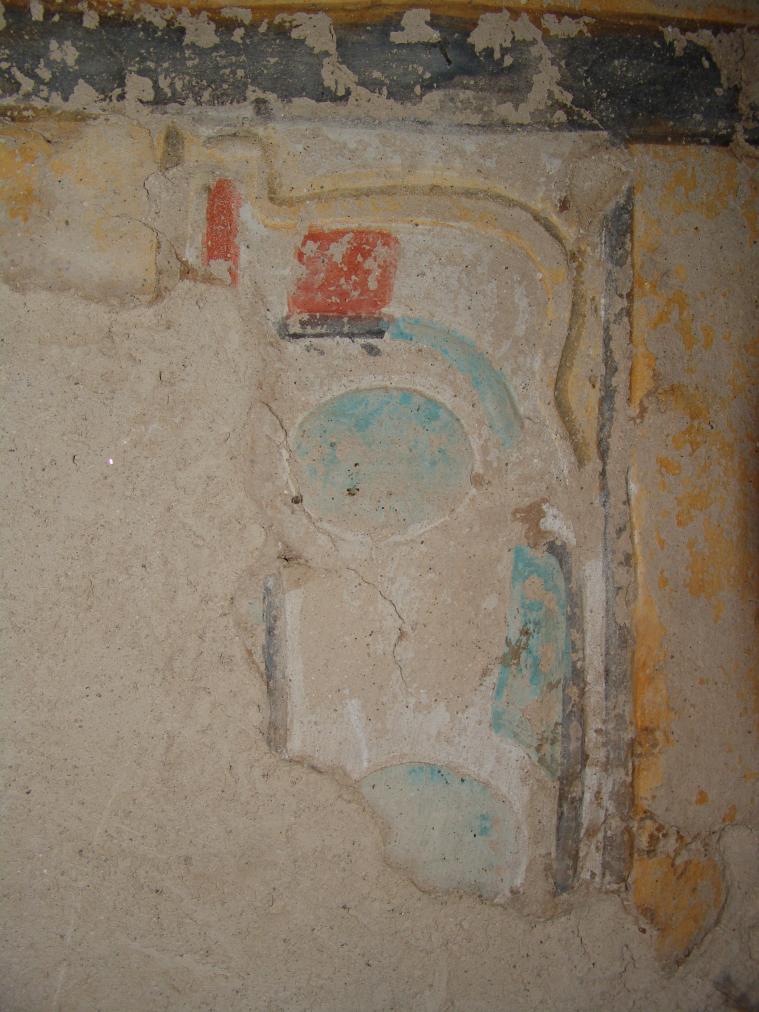
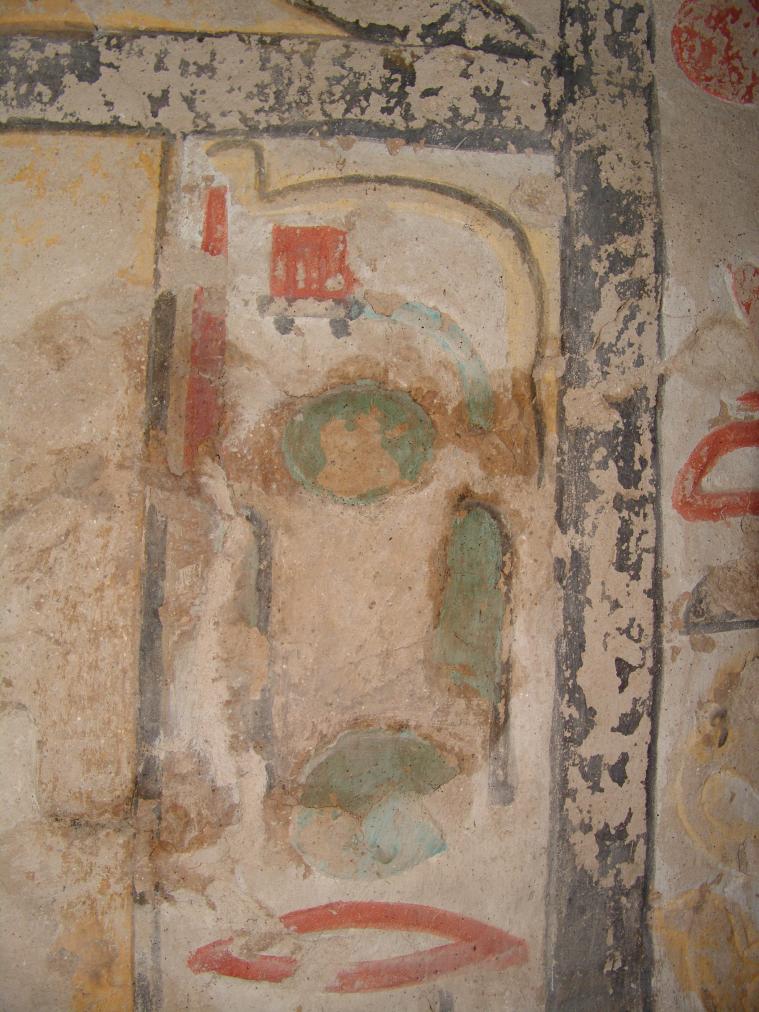
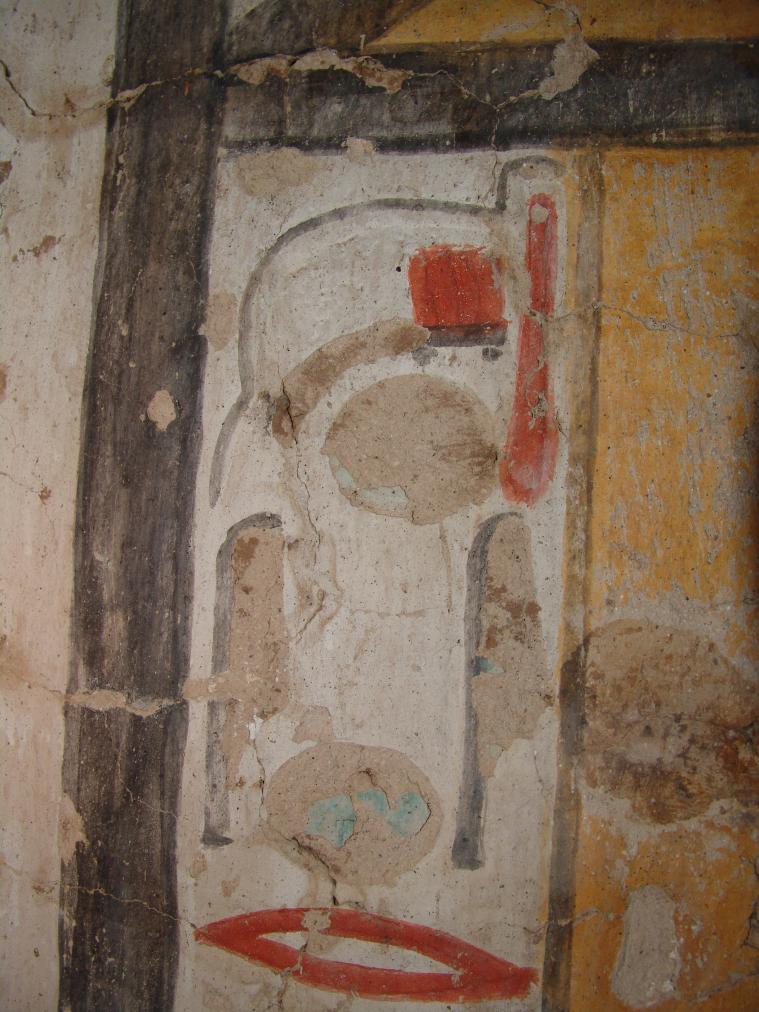
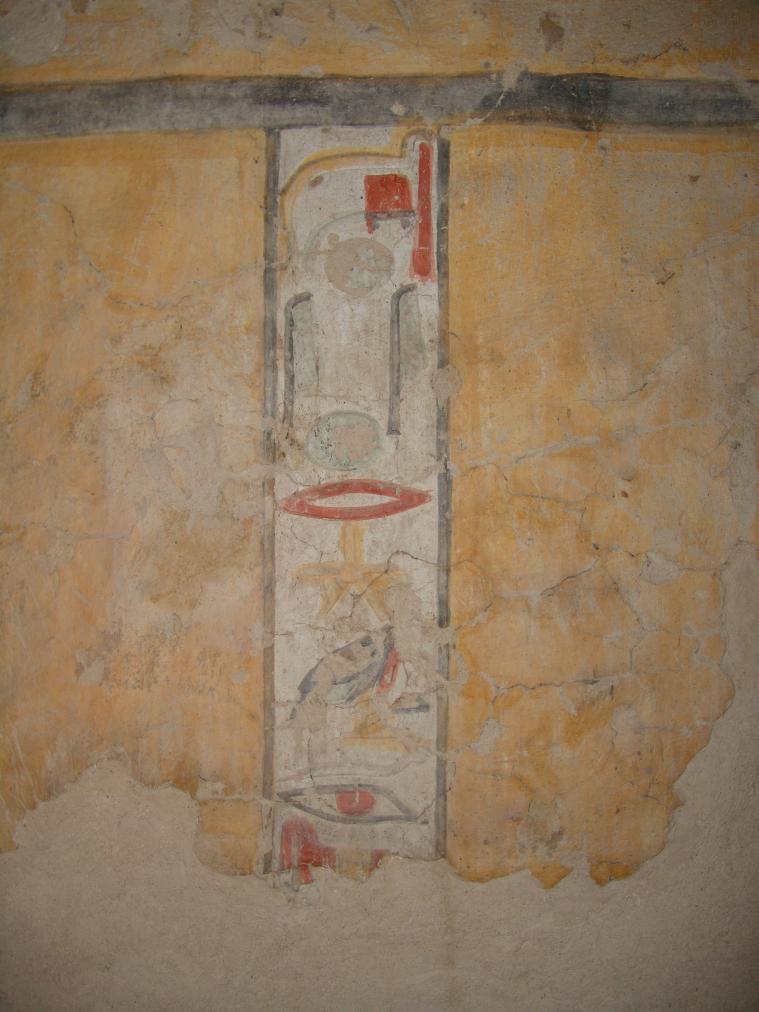
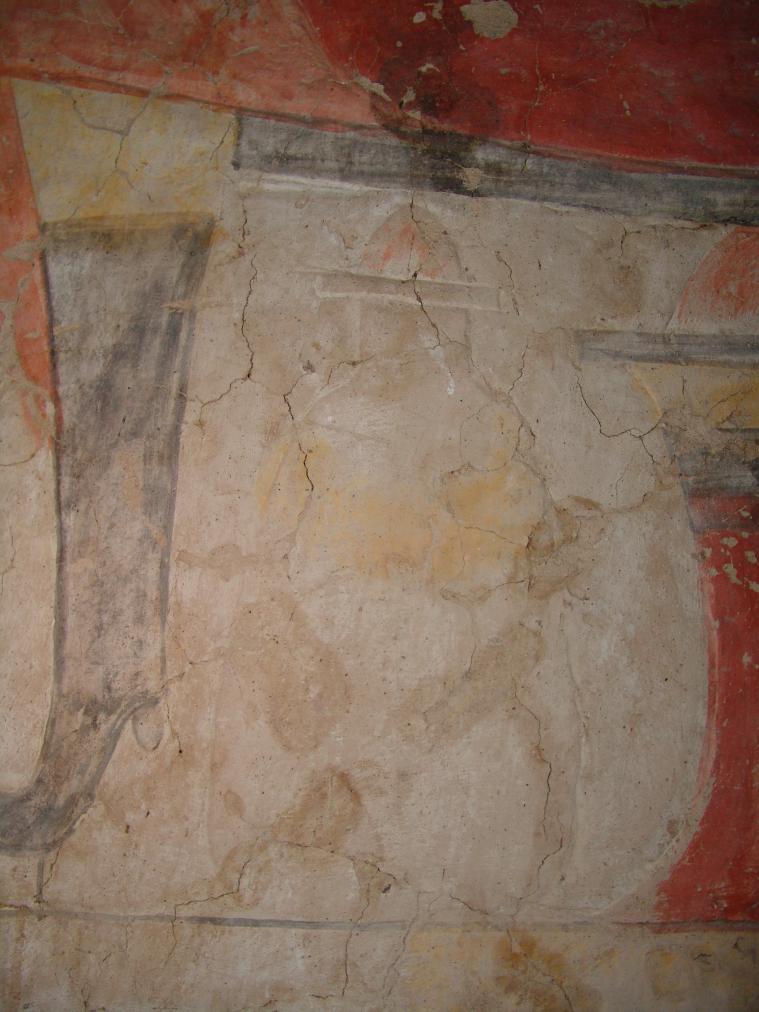
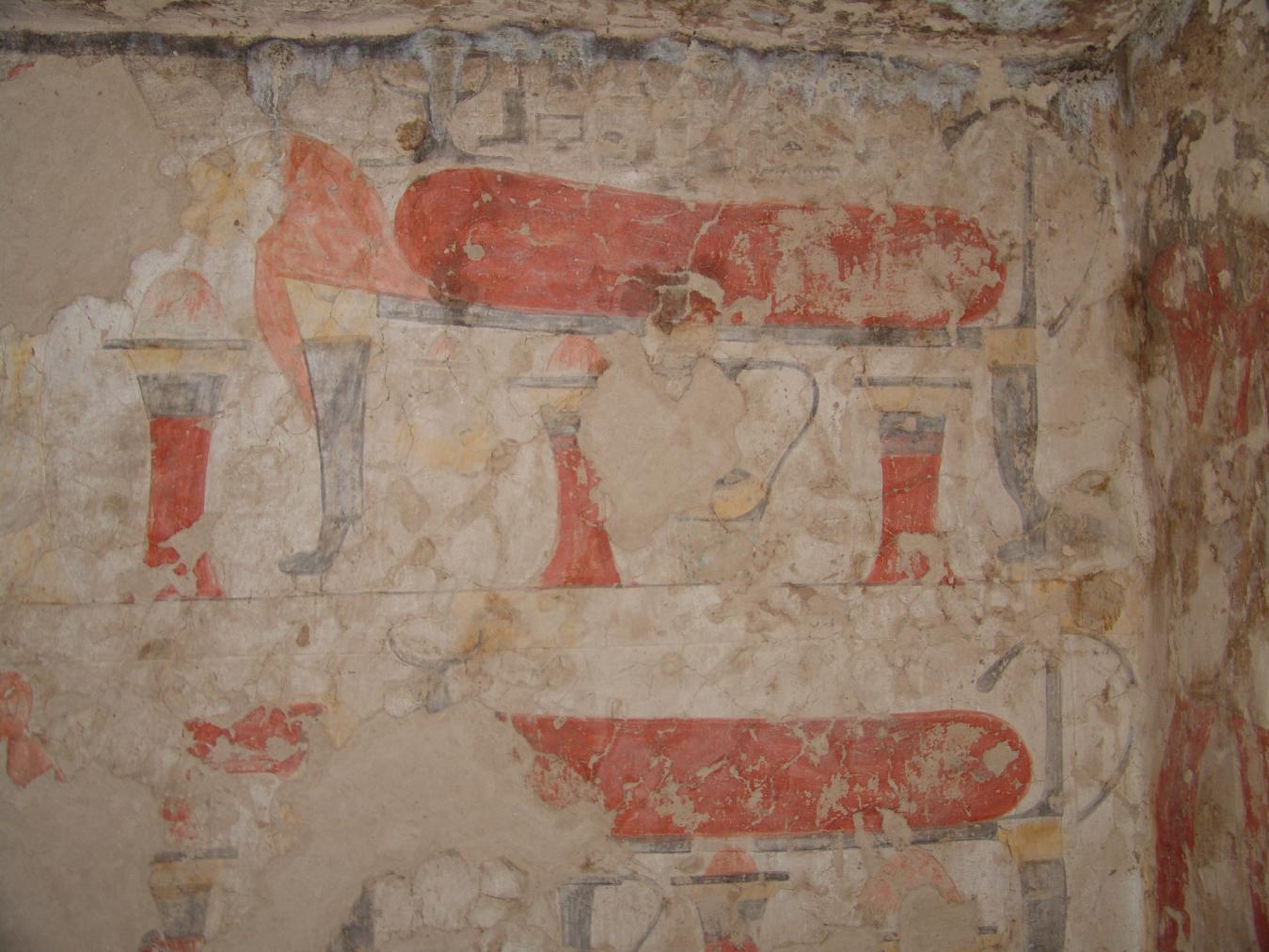
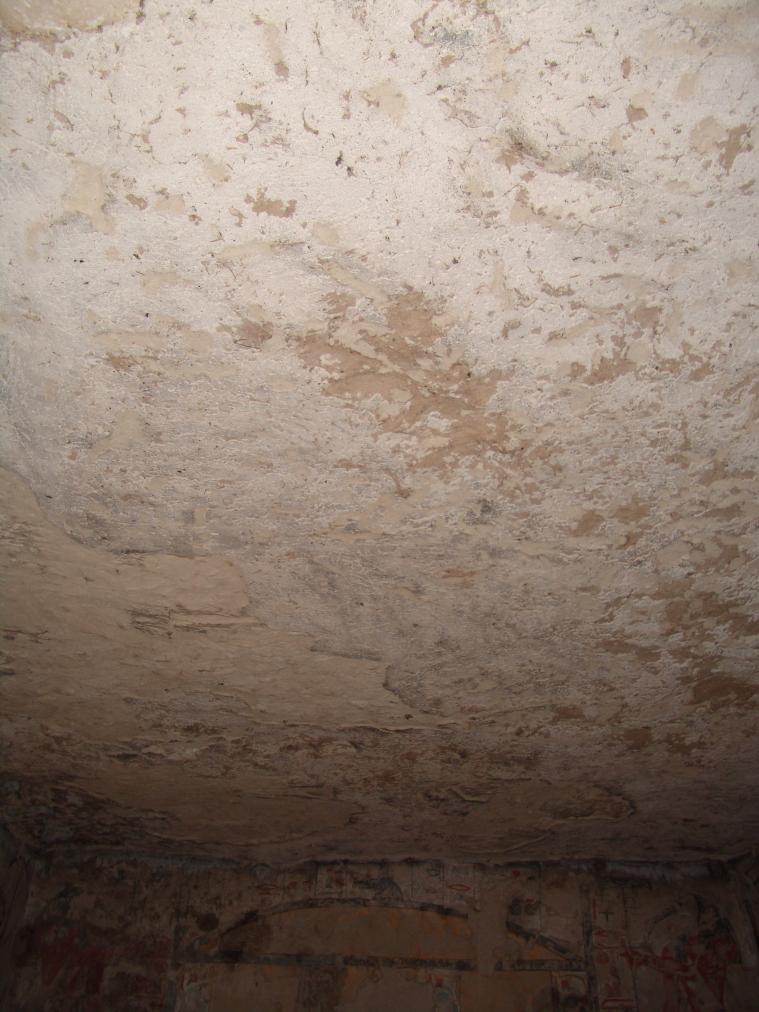
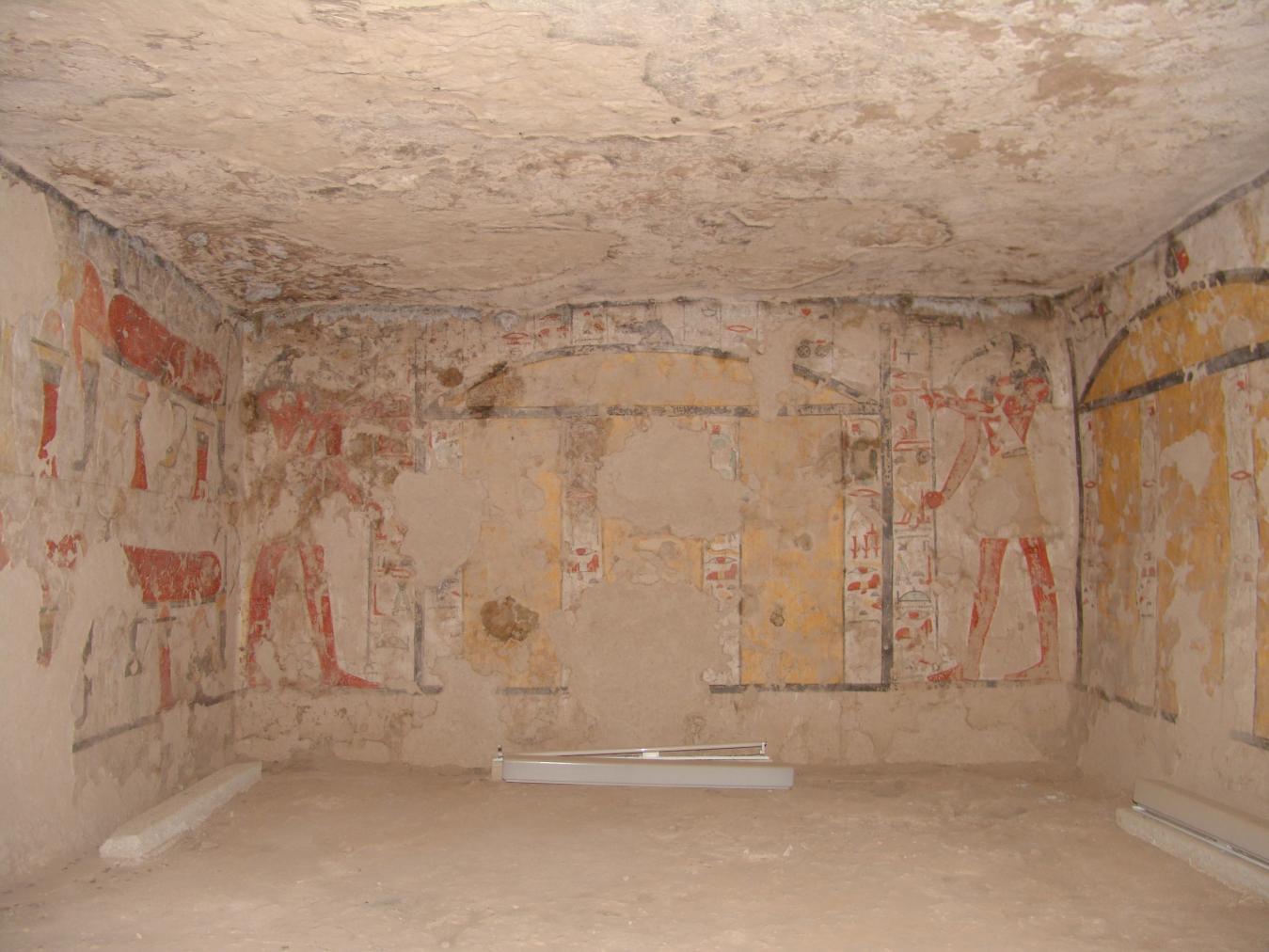
Gate C
See entire tombThis gate has been completely reconstructed in fired brick and cement.

Burial chamber C
See entire tombThis chamber lies perpendicular to the tomb's axis and functioned as the final resting place of the Queen. The ceiling is barrel vaulted and the walls were plastered and painted with no evidence of relief carving.
The scenes follow the "Satra repertoire" as seen in the burial chambers of Queen Satra (QV 38) and the Anonymous Princess (QV 40). It centers on the solarization and protection of the Queen and includes Book of the Dead spells 15, 17, and 145-46.
Chamber plan:
RectangularRelationship to main tomb axis:
PerpendicularChamber layout:
Flat floor, no pillarsFloor:
One levelCeiling:
Vaulted
Porter and Moss designation:
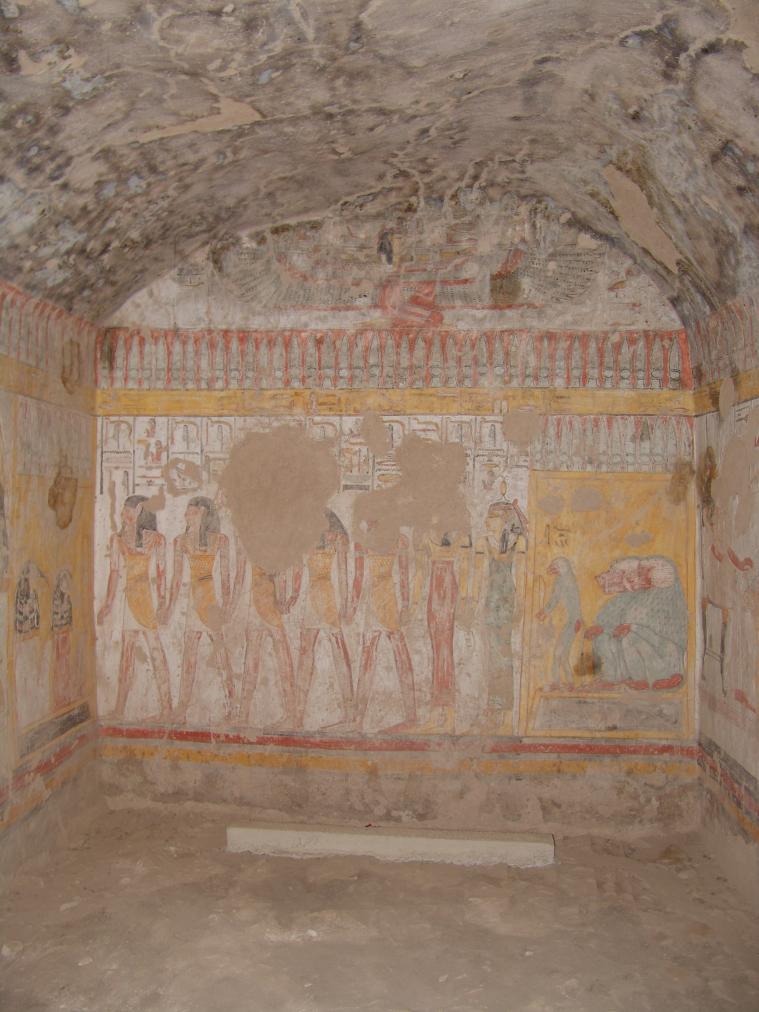
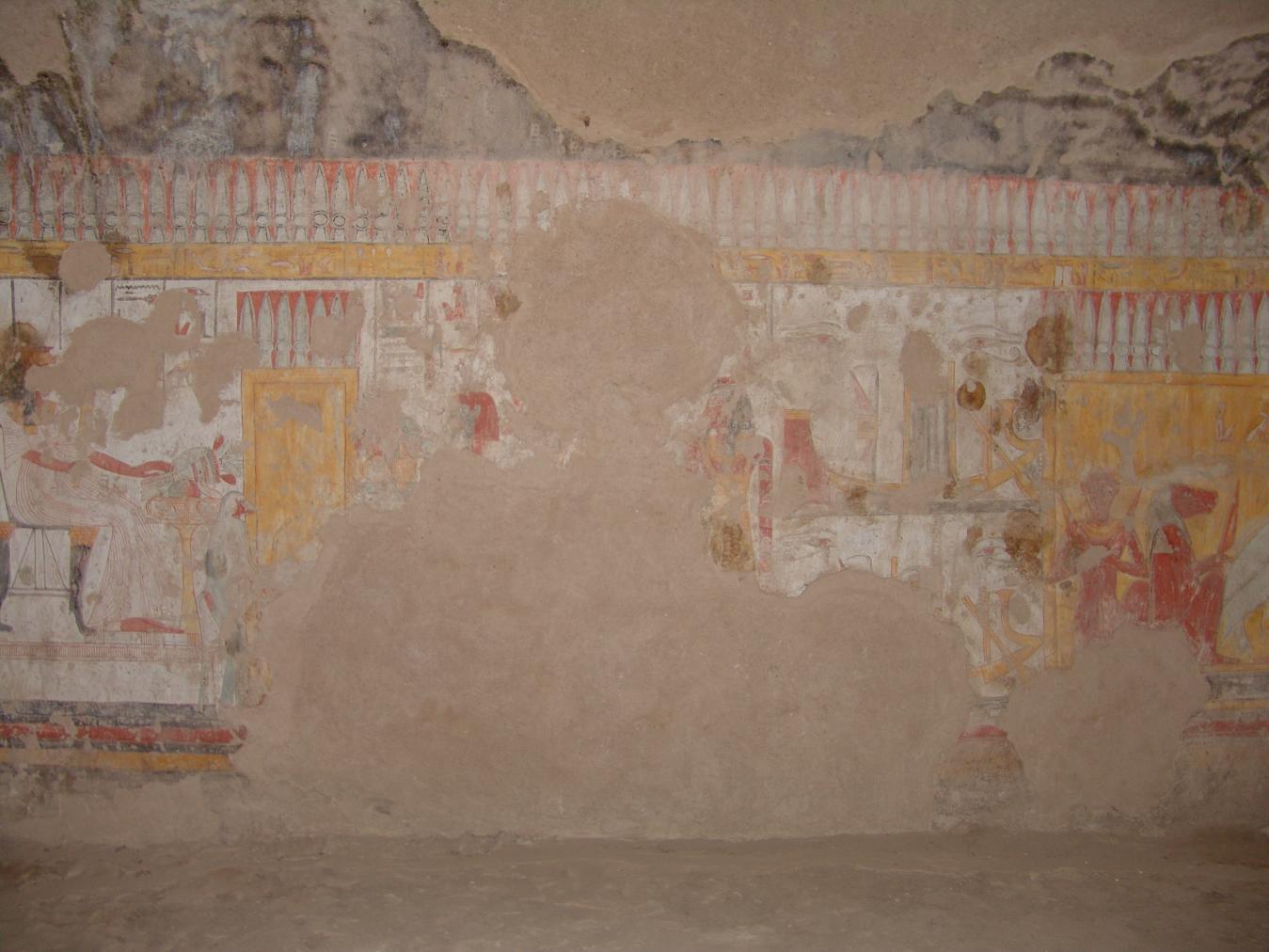
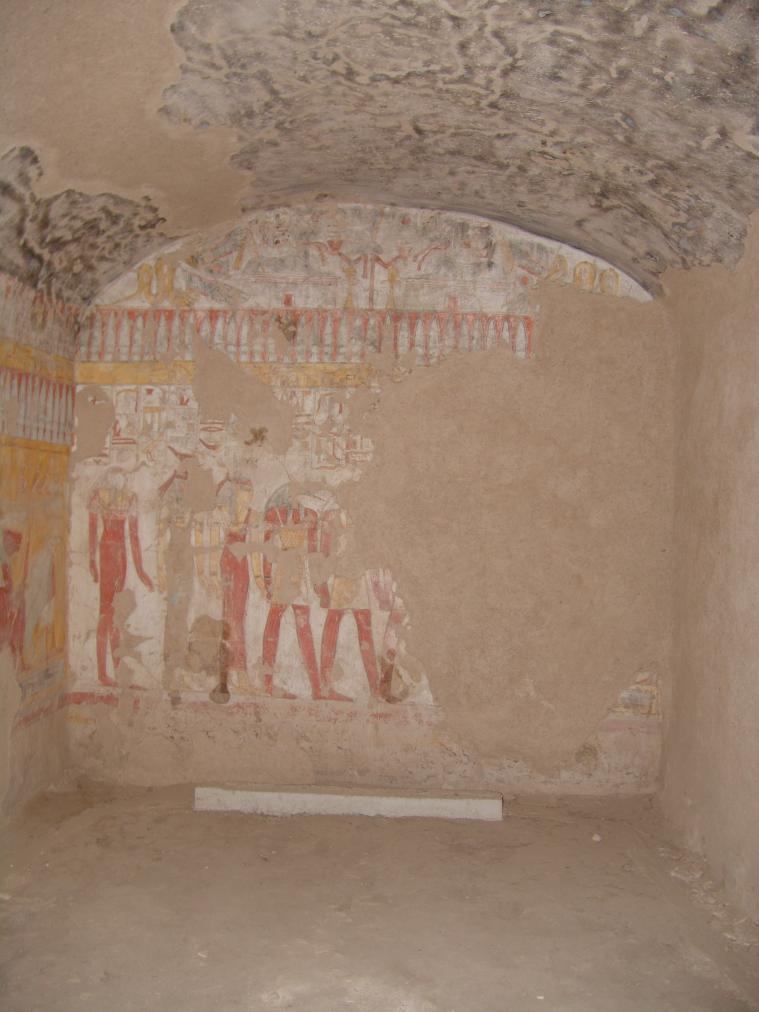
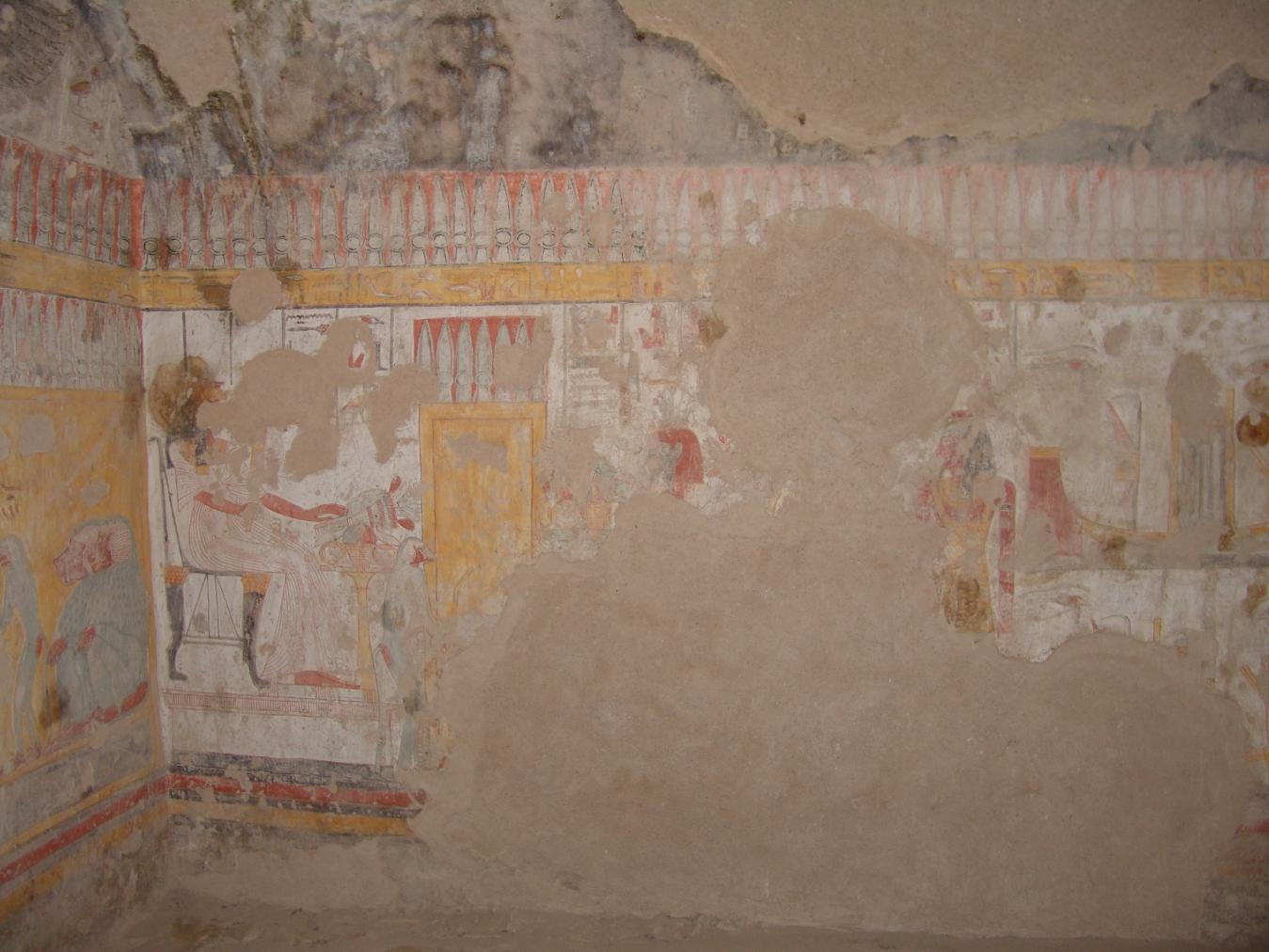
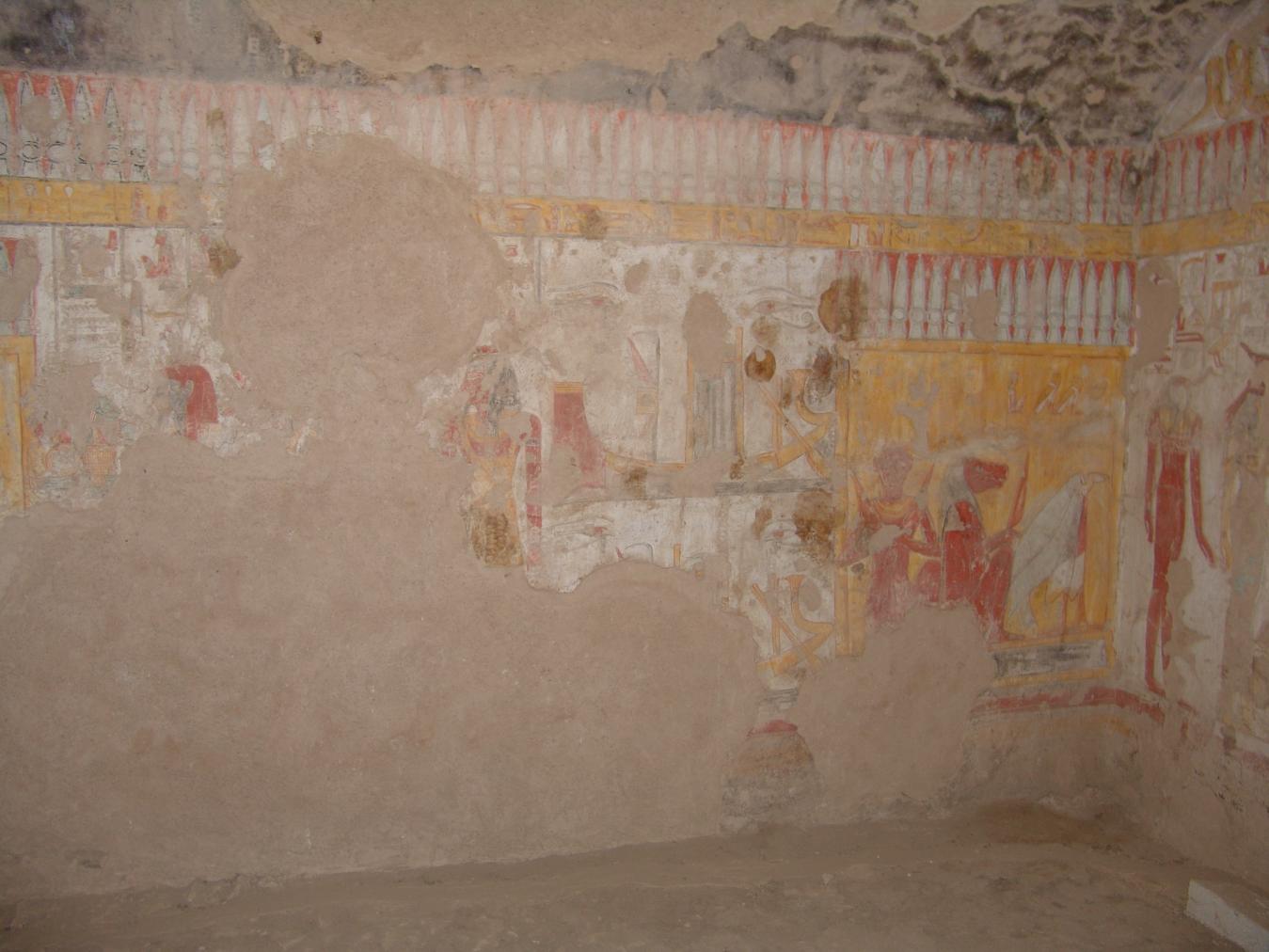
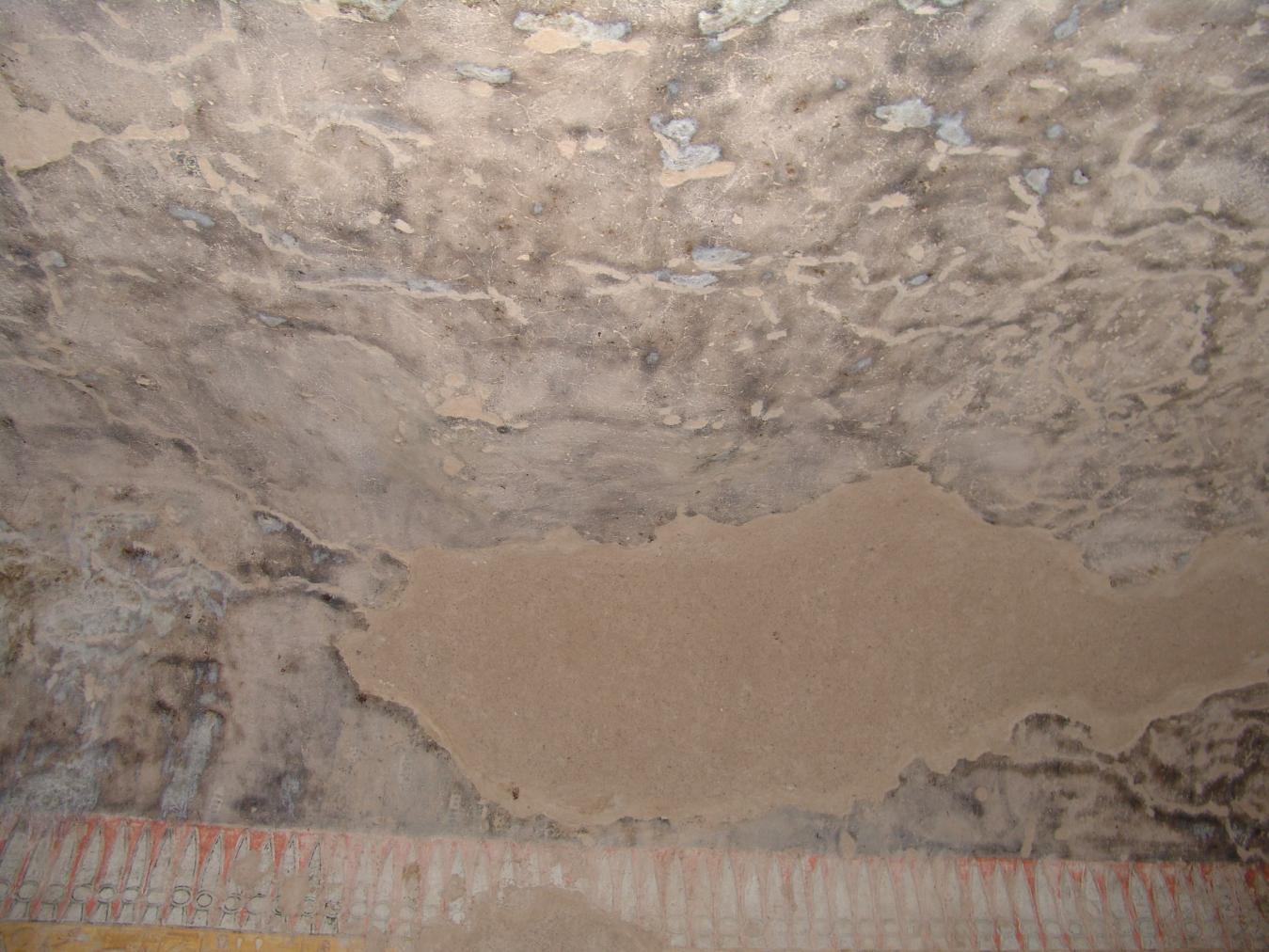
About
About
QV 40 is located halfway up the southwest branch of the main valley, adjacent to the main pathway and retaining wall. The tomb is entered through stepped Ramp (A) leading into pillared chamber (B) with a vaulted burial chamber (C) and side chamber (Ba) to the west. The two pillars were constructed after the ceiling was already plastered and painted. Only the easternmost pillar still survives.
QV 40 was likely made for a woman of great importance, judging from the quality of the painting. However, her identity is unknown as the cartouches were never filled in. It is also unknown whether the tomb was actually ever used. Titles of the queen exist above the blank cartouches and there are a total of six portraits. The tomb is attributed to the reign of Seti I, or possibly Rameses I, based principally on its location within the valley. It is the first Ramesside queen's tomb that contains multiple images of the deceased and the first that depicts the queen actively making offerings to gods rather than just being the recipient of offerings as in QV 33, QV 36, and QV 38. Extensive raised relief painted plaster survives on the walls in Pillared Chamber B, and painted plaster occurs on the ceilings and walls of the Burial chamber and side chamber. The paintings in side chamber (Ba) are on a larger scale and in a cruder style with a more limited palette (red, black, yellow and white) compared with other areas of the tomb and may therefore be unfinished. Small traces of original infill material and upper plaster also survive on the walls of entrance ramp (A).
This tomb has been accessible since the time of R. Hay of Linplum (1826), who described it and the single pillar in his notes. Ernesto Schiaparelli cleared the tomb during the Italian Archaeological Expedition's work at the site (1903-05). Elizabeth Thomas (1959-60) noted that the ceiling vault is the first example of this type in the Valley of the Queens, the two pillars are the only 19th Dynasty pillars on the south side of the valley, and that the layout of this tomb is distinct from that of its predecessors. Carl Lepsius recorded the presence of a Hieratic graffito in chamber (B), dated to the Rameses III reign. Currently the tomb is not open to visitation, though it was open from an unknown date (probably mid 1990s) until 2000.
Noteworthy features:
QV 40 is the first tomb in the Valley of the Queens constructed with a barrel-vaulted burial chamber and a pillared hall that served as the antechamber. This is also the first use of an antechamber representing the architectural and cosmographic expansion and evolution in the conception of what a Ramesside queen's tomb should be. The smaller rear room (C) of the tomb, and not the pillared chamber, was decorated as the burial chamber.
Site History
The tomb was constructed in the 19th Dynasty and was presumably accessible at a certain point in antiquity as two Hieratic graffiti were left by a high official during Rameses III reign in chamber (C).
Dating
This site was used during the following period(s):
Exploration
Conservation
Conservation History
Cement Steps in Ramp (A) were built on top of original rock cut steps that are still visible at sides. Lights have been placed (though not installed) in the tomb and six cement blocks for mounting lighting units are scattered throughout the tomb. The entrance was rebuilt (date unknown) with fired brick and covered in plaster with a wooden door and metal grills and mesh installed in a wooden frame. In 2010, the SCA repaired and covered the stone retaining wall of the ramp with plaster. The paintings have been extensively treated and all areas of loss filled with modern plaster repairs.
Site Condition
According to the GCI-SCA, the irregular Overhang of rock over the entrance indicates some rock loss has occurred in the past. Some loose surface rock on both sides of the entrance is present. The interior of the tomb has no apparent structural problems and is considered stable, though the extensive plaster repairs may hide any underlying problems. This plaster is also sometimes found smeared over and concealing original areas of painting. The constructed western pillar in chamber (B), of which only the base still survives, was presumably lost in antiquity. Other large areas of loss occur within the painting, around doors, in ceilings, and at the base of walls. Despite these large areas of loss, there is still a fair amount of painting that survives in good condition. Plaster cracking is evident but does not appear to be severe or endangering. An unusual darkening of the red paint of face and hands can be seen on the east wall (northeast corner) of chamber (C). Greens and blues are only rarely used in this tomb and generally appear faded or have been preferentially lost. Additional treatment was undertaken by the SCA between 1993-1995, perhaps in preparation for opening the tomb to visitors, which included consolidation of cracks and plaster repairs. There is evidence of extensive cleaning of the paintings, which appear to have been highly abrasive and may have resulted in loss of color and painted definition of blue and green areas. Although no bats were seen during the GCI-SCA assessment, there is evidence of considerable past bat activity. Evidence of bats is present in side chamber (Ba) and in burial chamber (C) at the tops of walls. Heavily jointed and fractured marl in the entrance Ramp is at risk from occasional rainwater exposure. Rock fissuring and loss of substantial infill material have contributed to the fragmentary survival of the decoration we see today. The extent of large areas of loss also may be an indication of past flood damage, though there are no recorded reports of flooding in this tomb. Additionally, the long history of access to the tomb, including bat activity, have also contributed to the deterioration visible today.
Hieroglyphs
Queen
 King's Daughter of his body, his Beloved, King's Wife, Lady of the Two Lands, Mistress of the South and the North,...
sAt-nswt-n-Xt.f mr.f Hmt-nswt nbt-tAwy Hnwt-Sma-mHw [...]
King's Daughter of his body, his Beloved, King's Wife, Lady of the Two Lands, Mistress of the South and the North,...
sAt-nswt-n-Xt.f mr.f Hmt-nswt nbt-tAwy Hnwt-Sma-mHw [...]




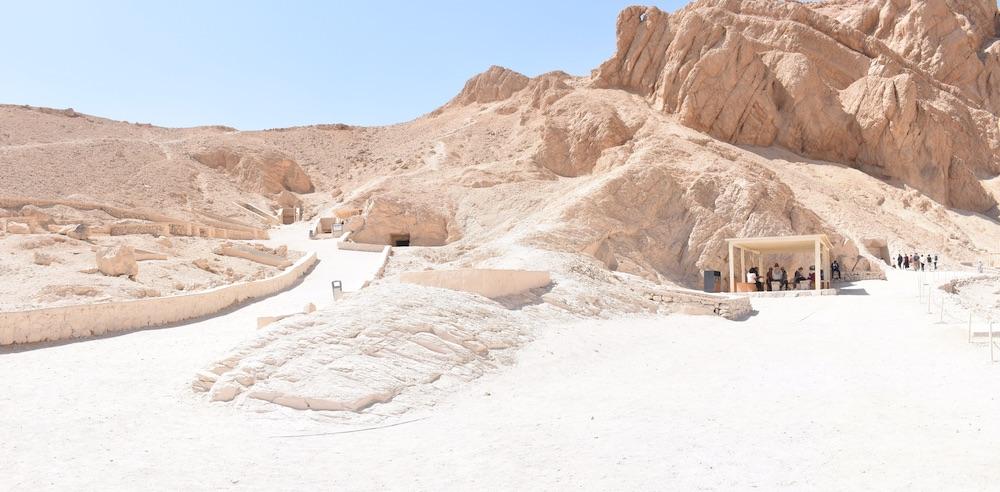
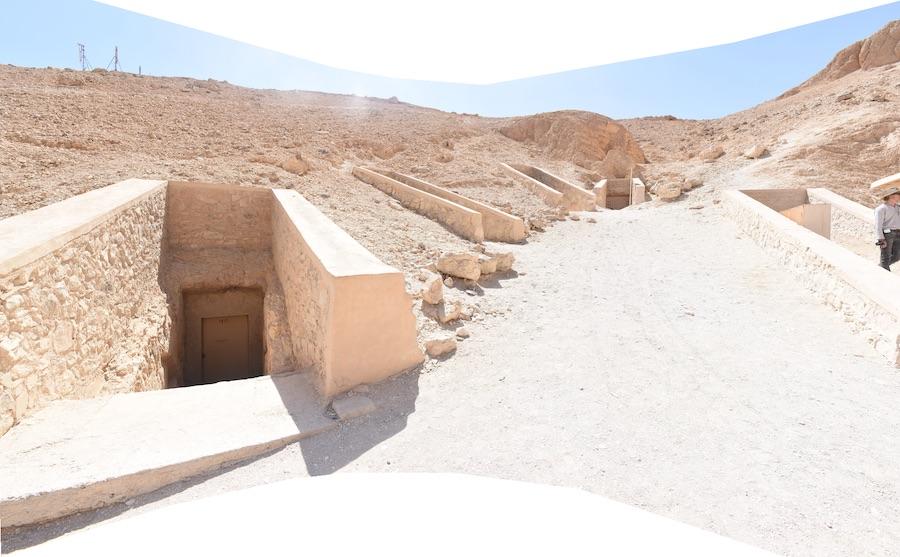











































Bibliography
Thomas, Elizabeth. The Royal Necropoleis of Thebes. Princeton: privately printed, 1966.
Wild, James W. Wild MSS: [Architect, attached to the Lepsius Expedition in 1842]. The Griffith Institute, Ashmolean Museum, Oxford, 1842.

